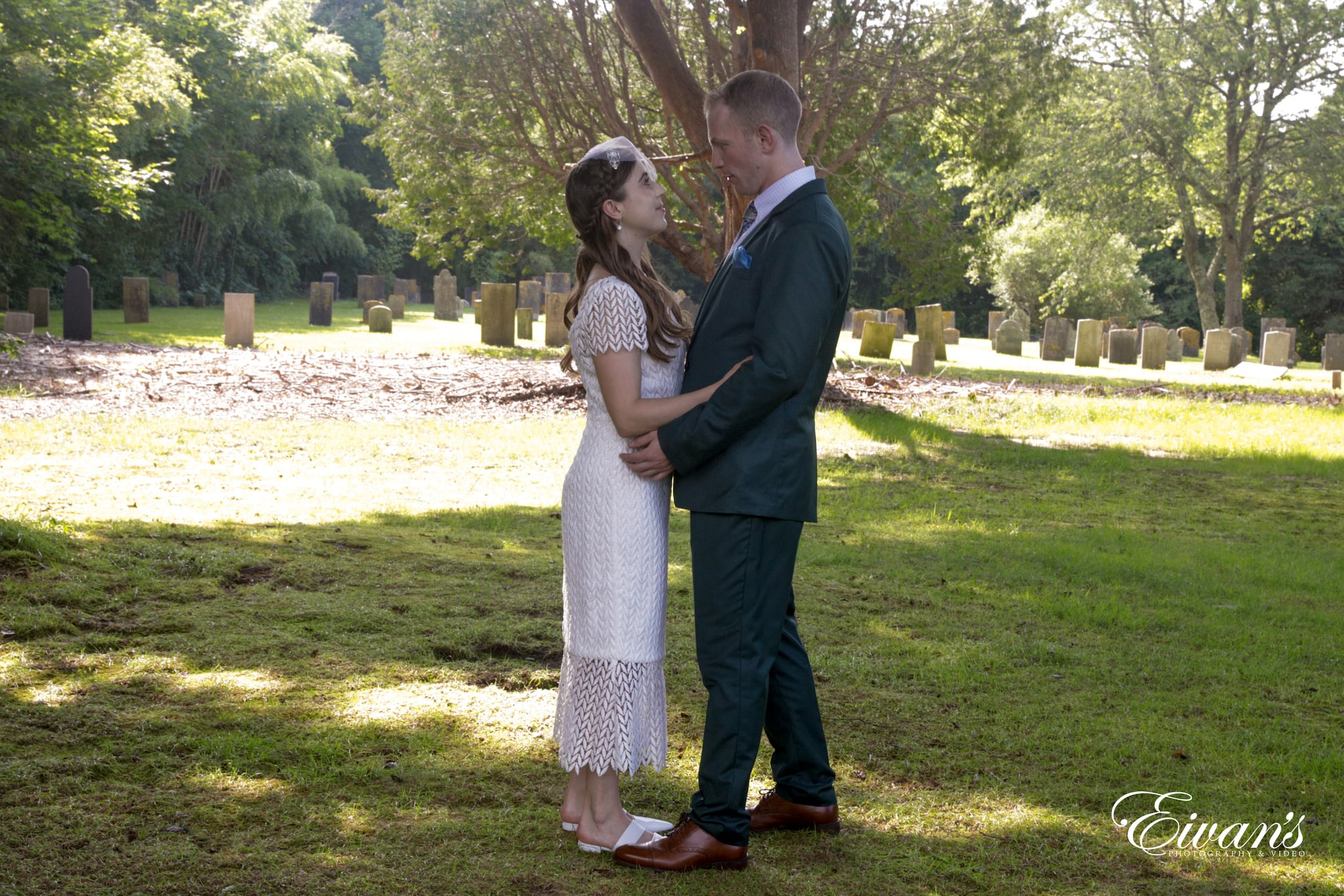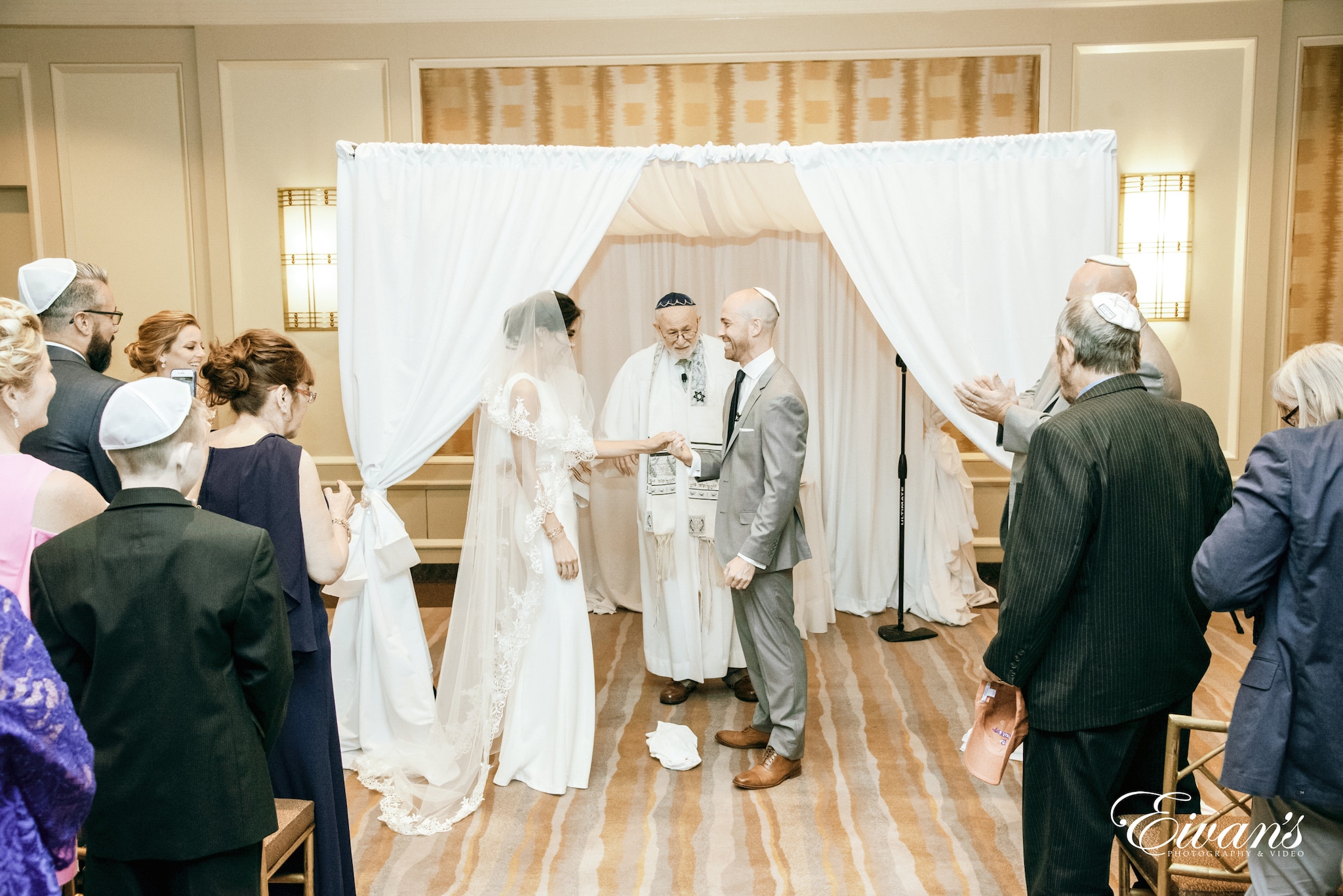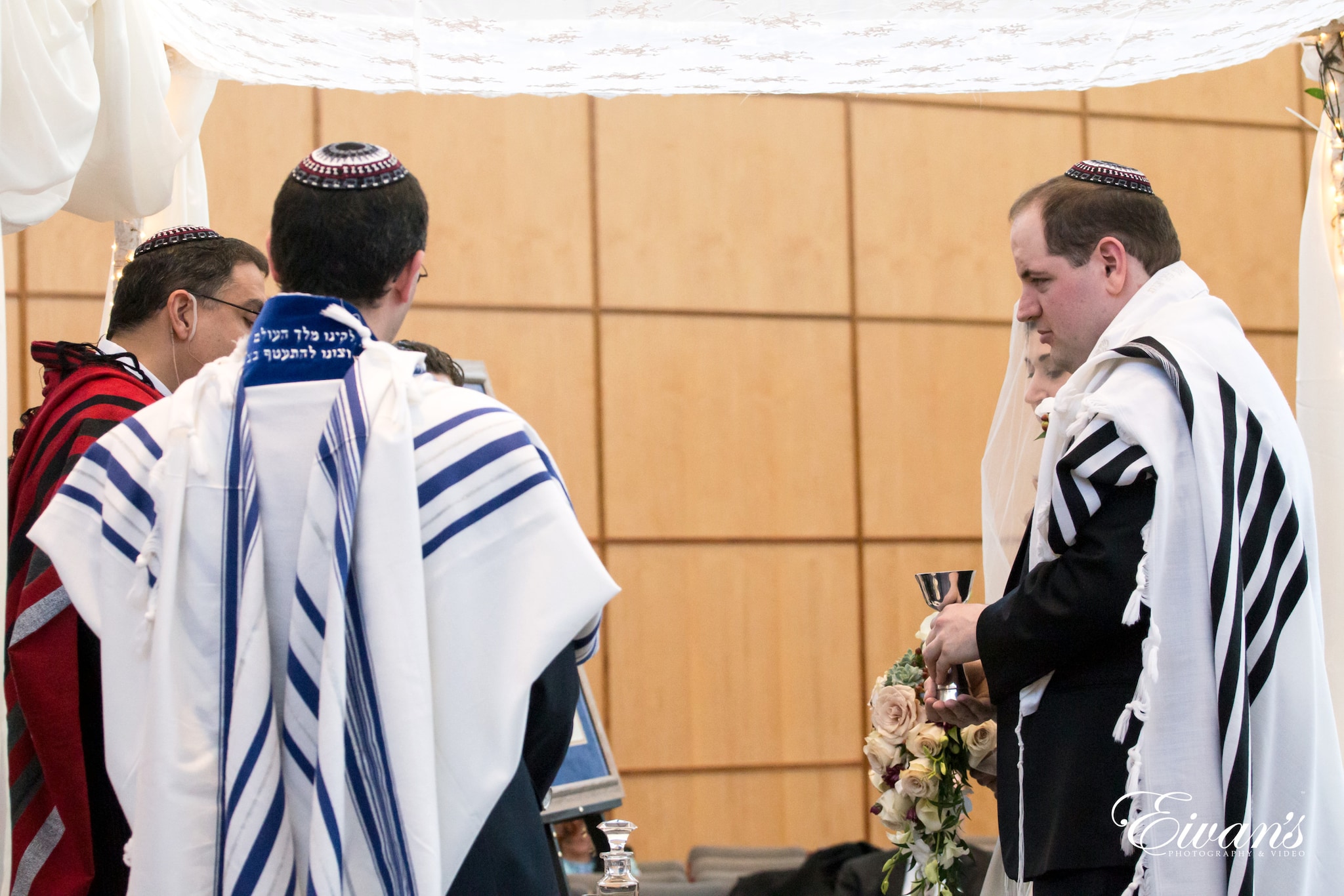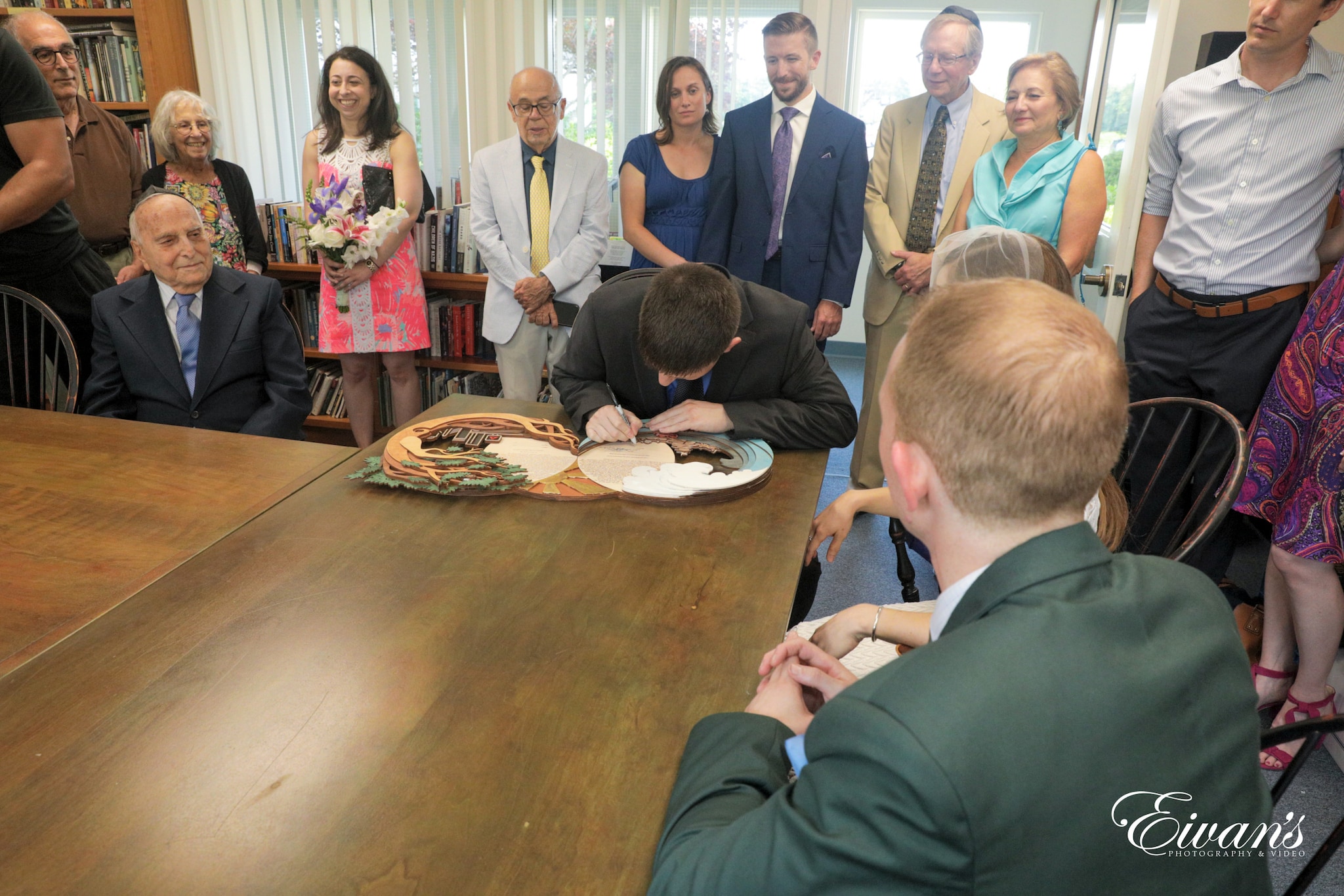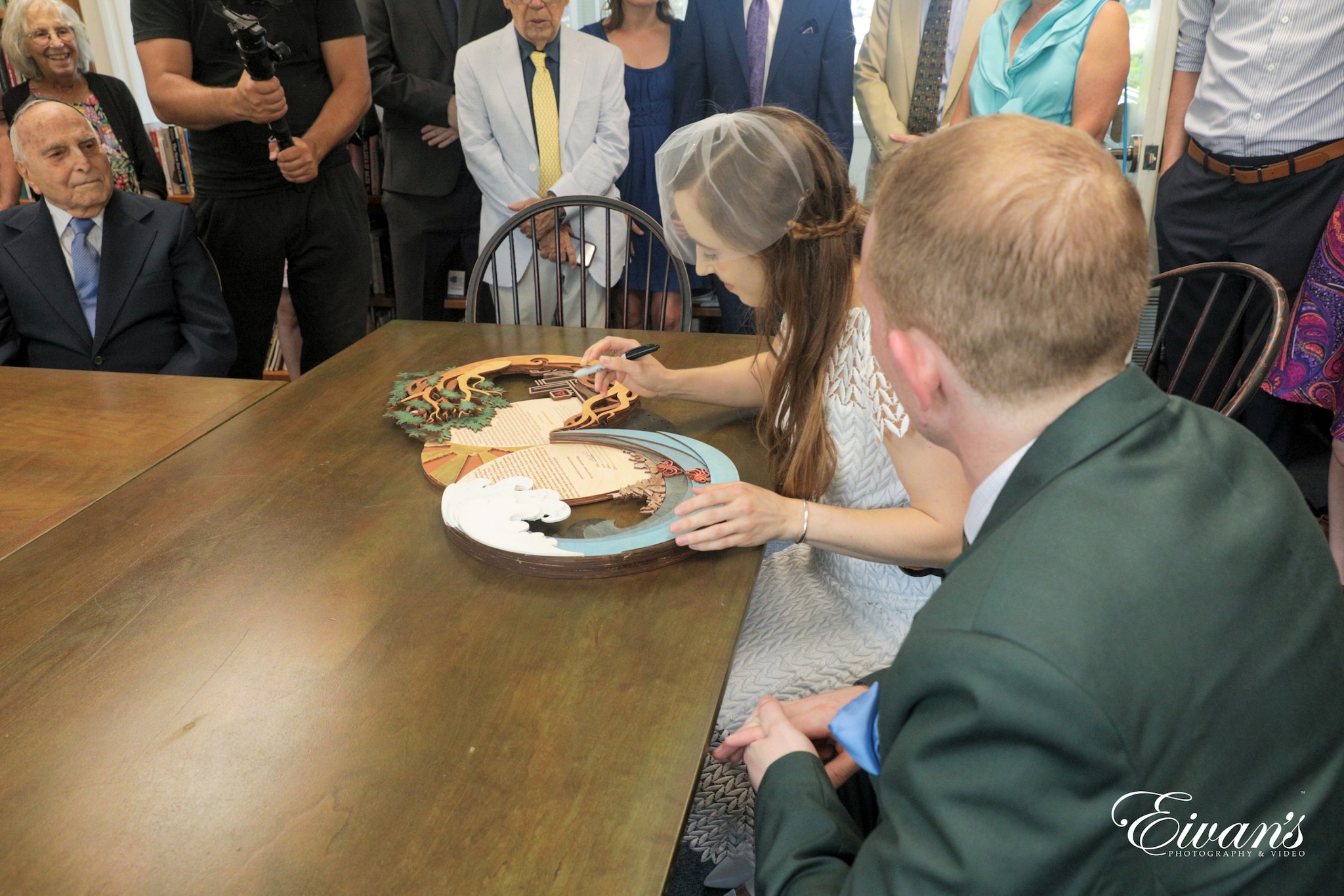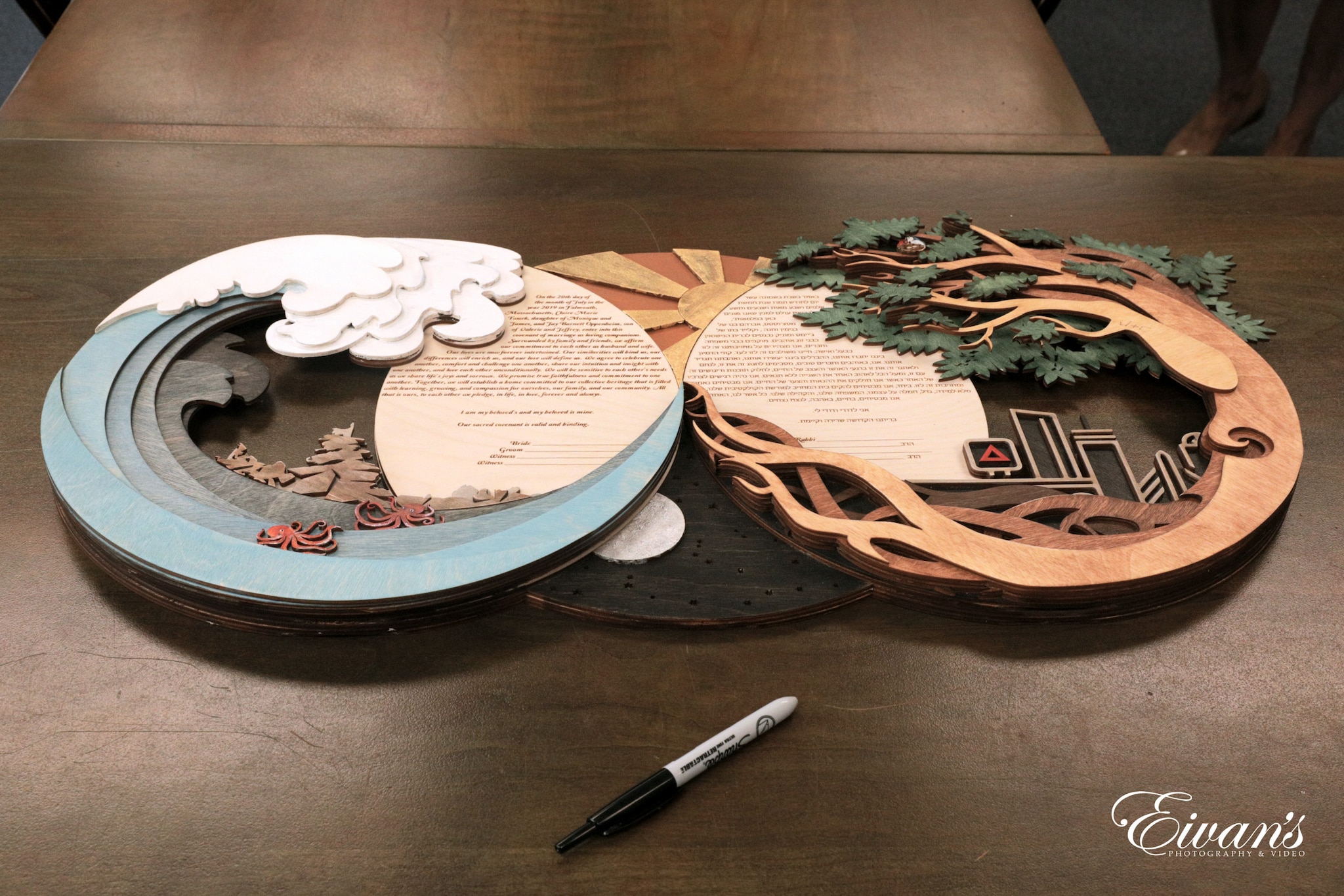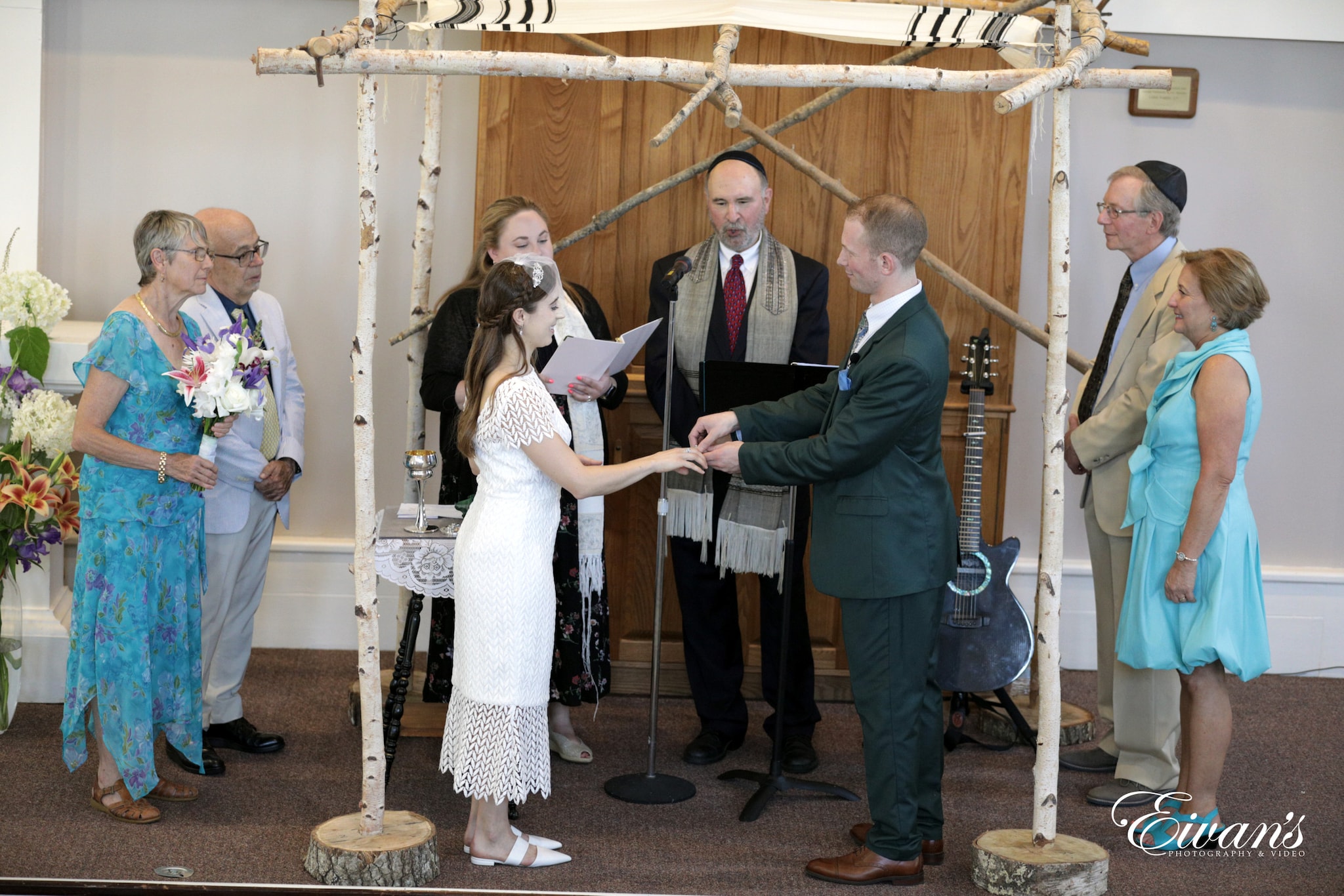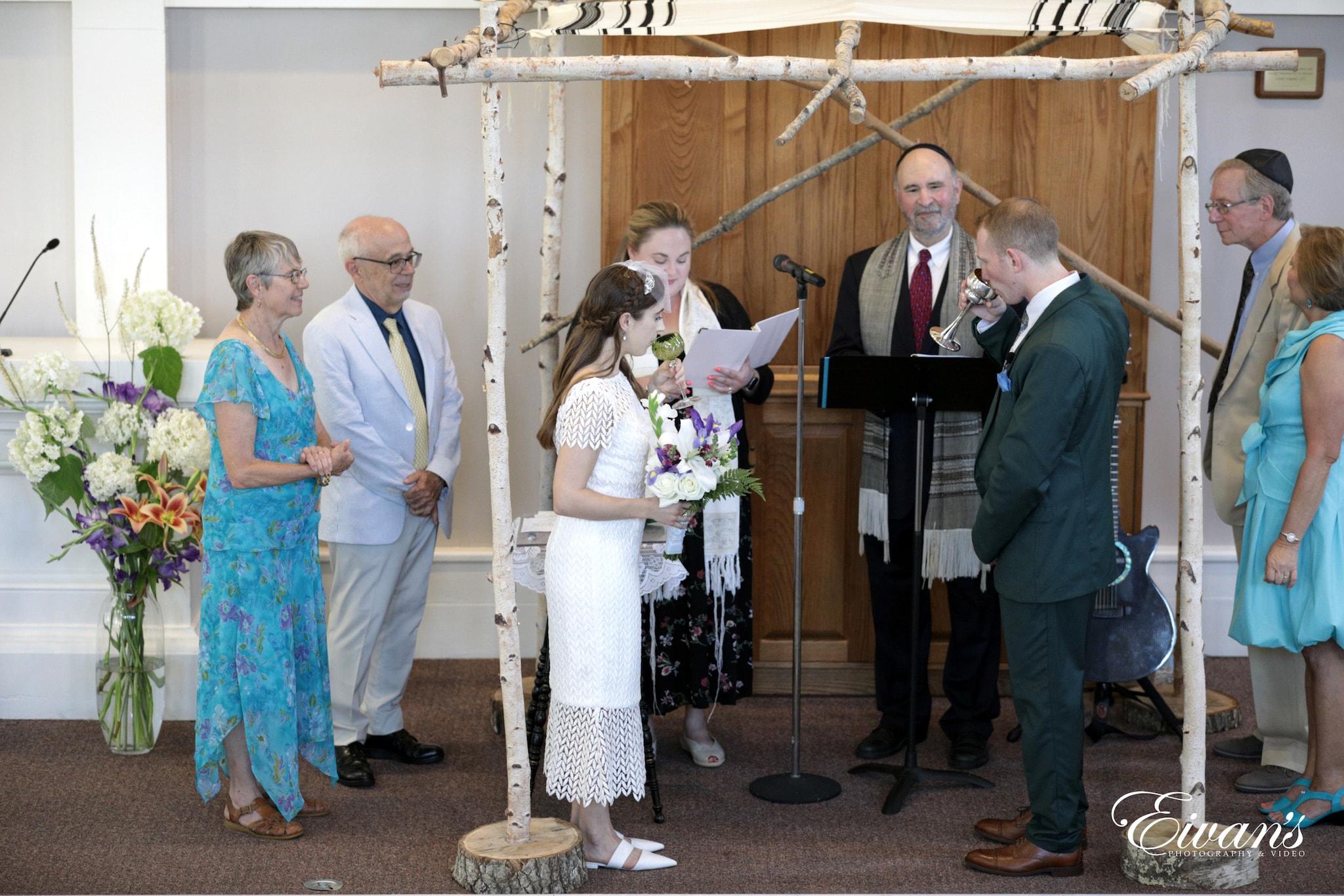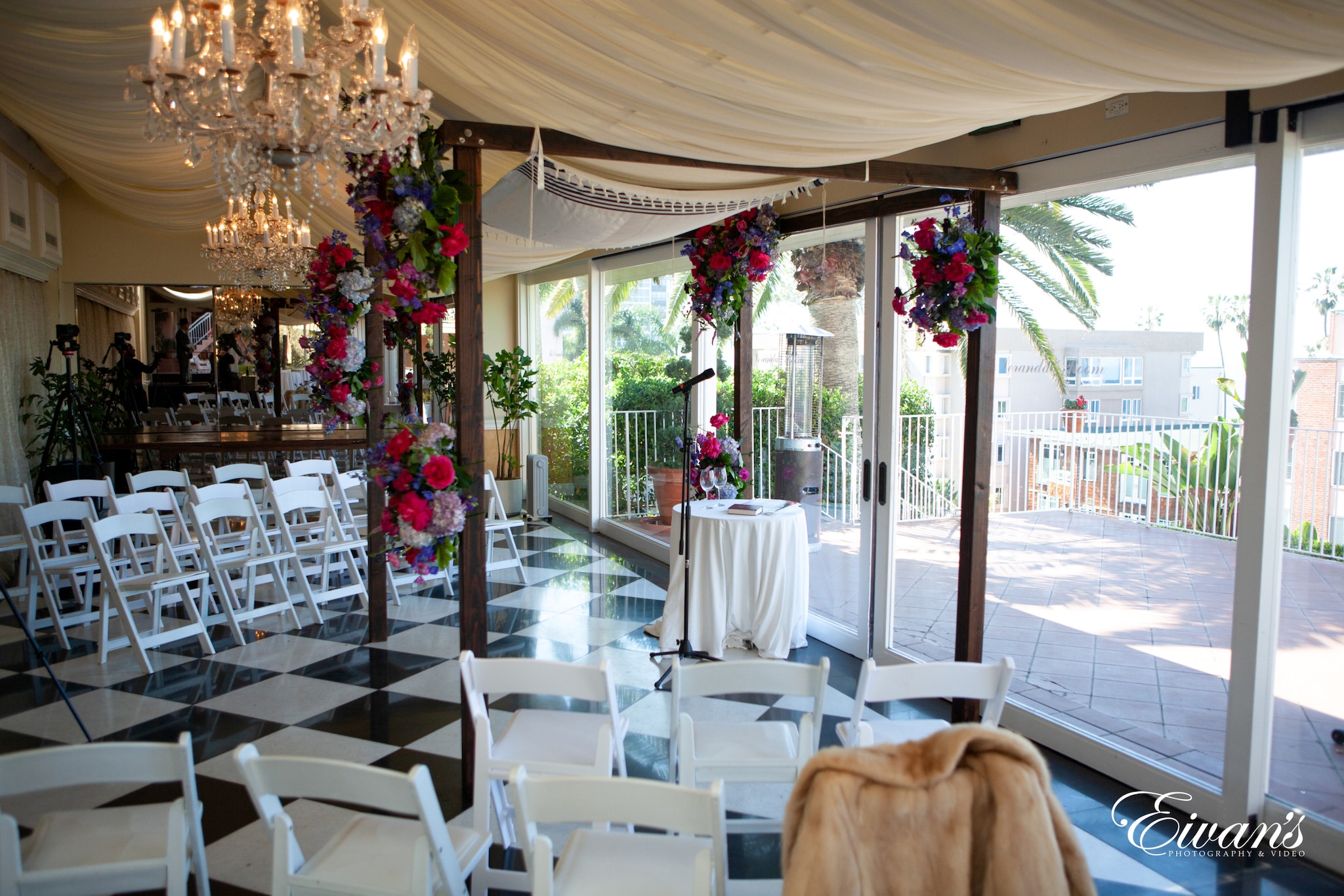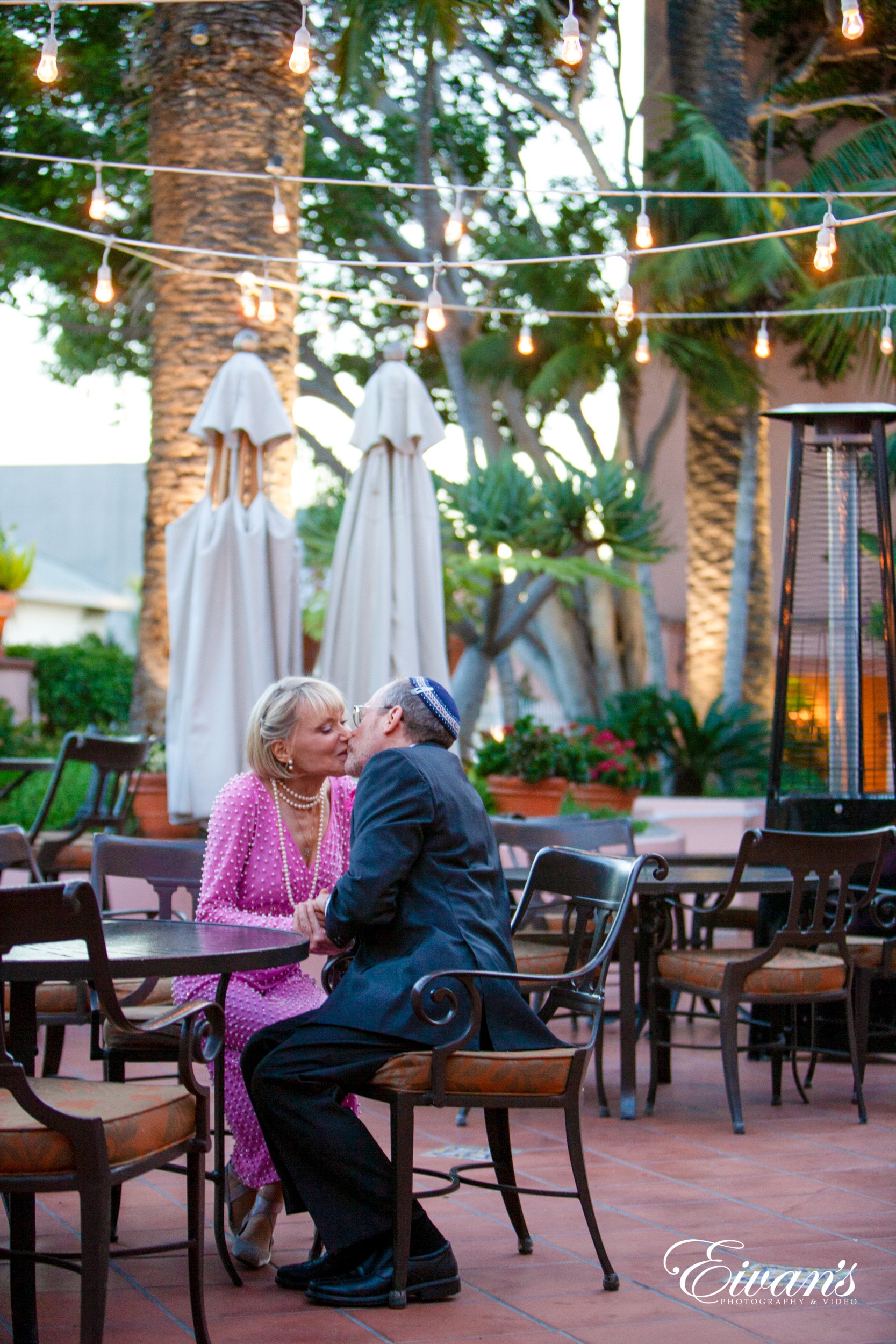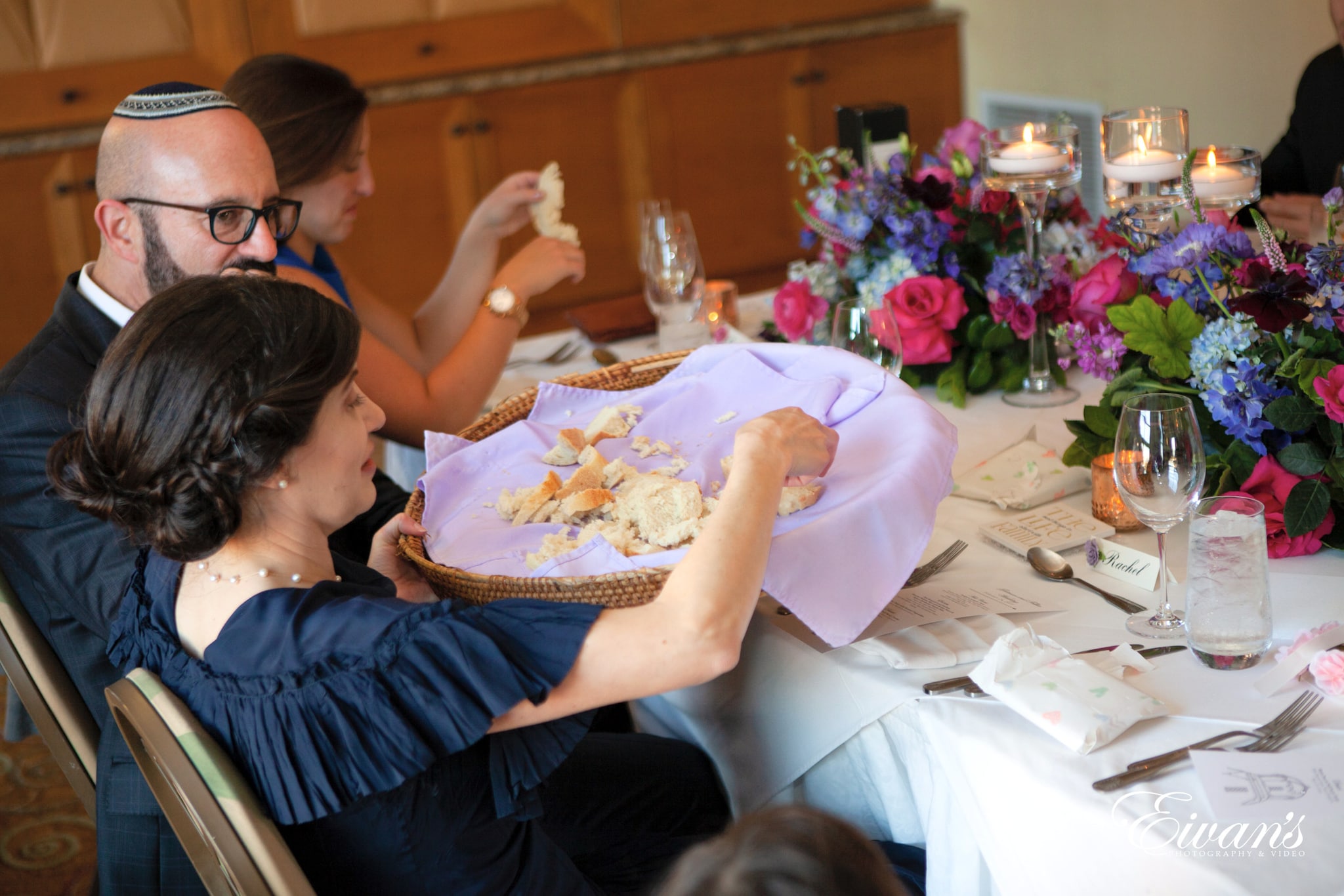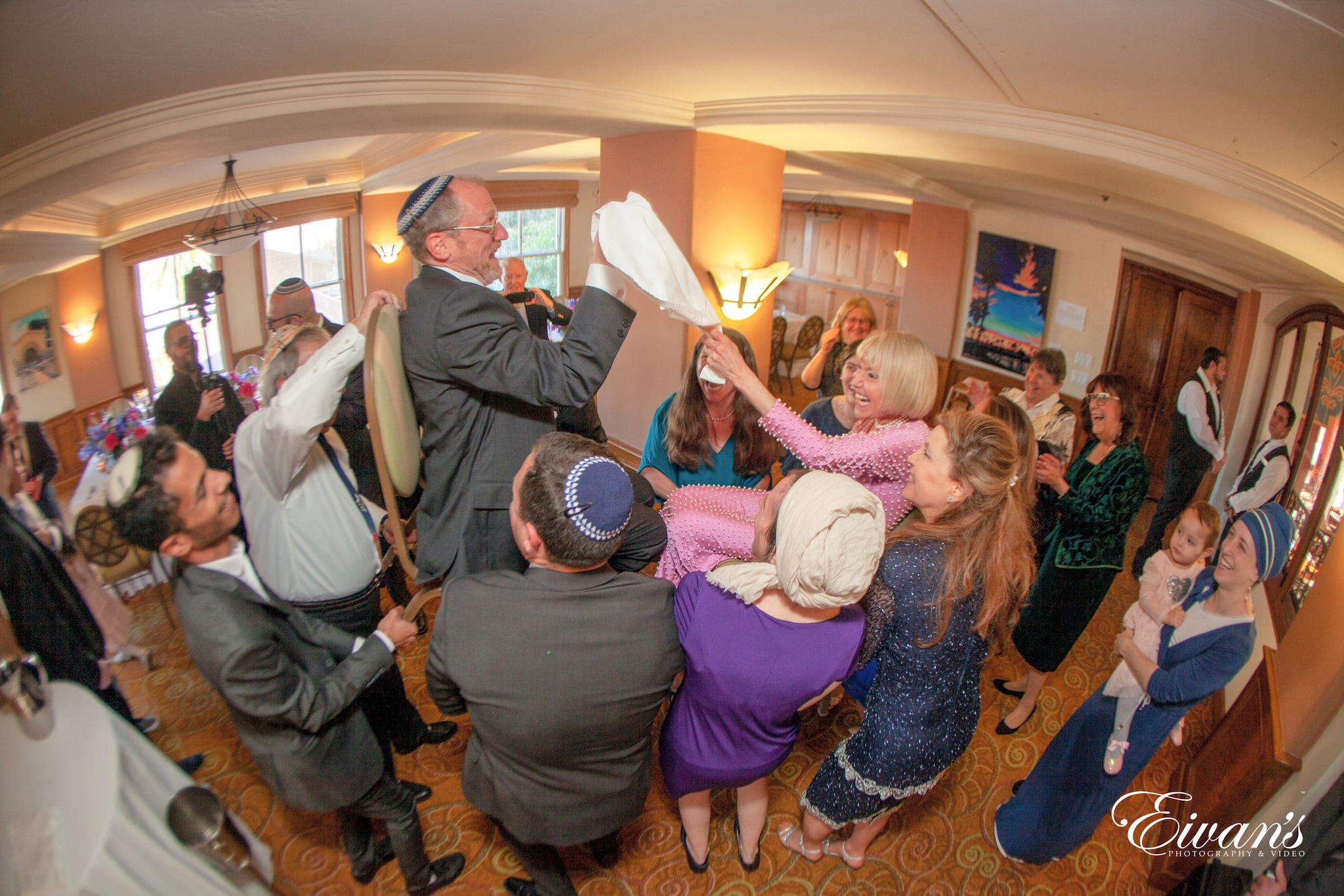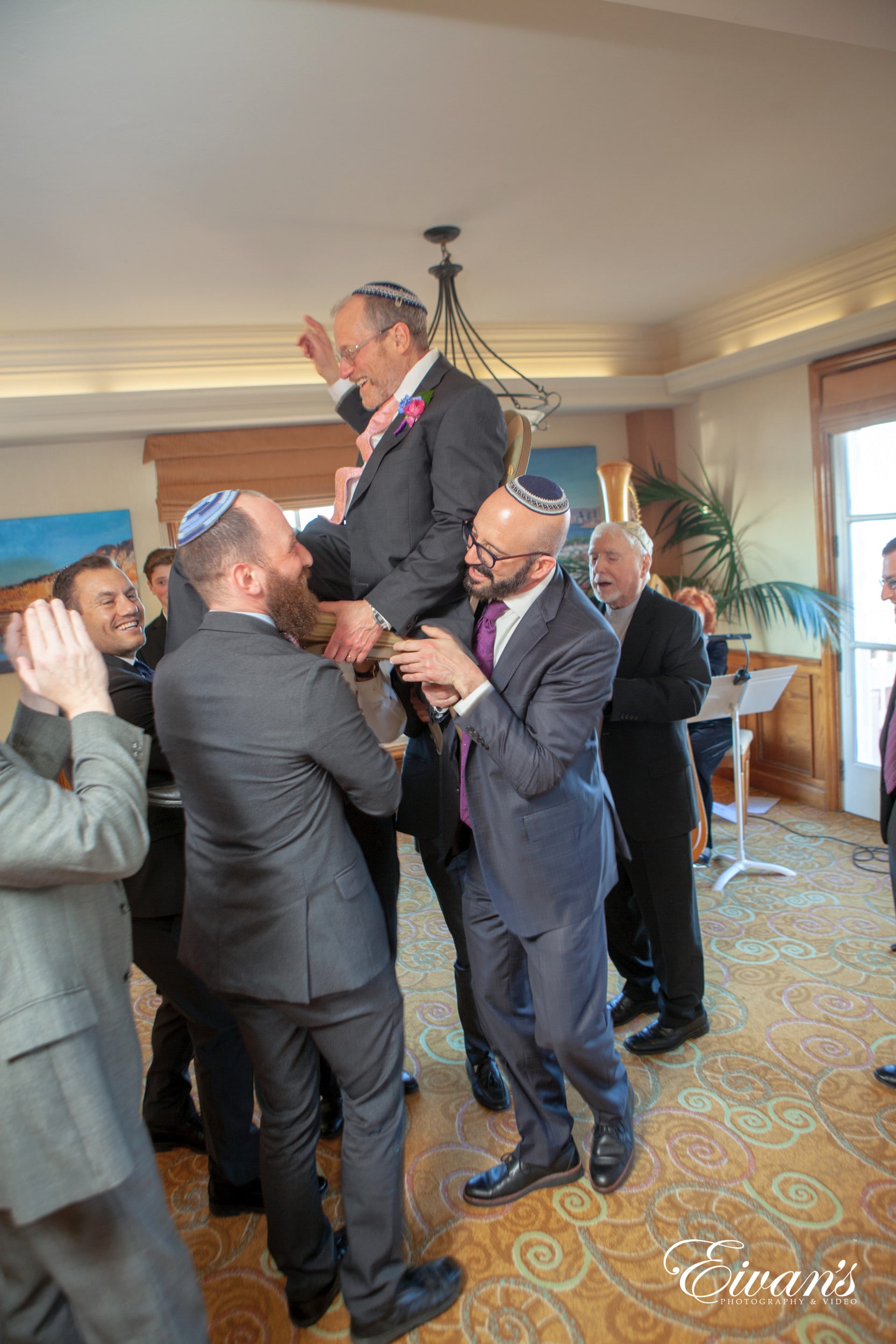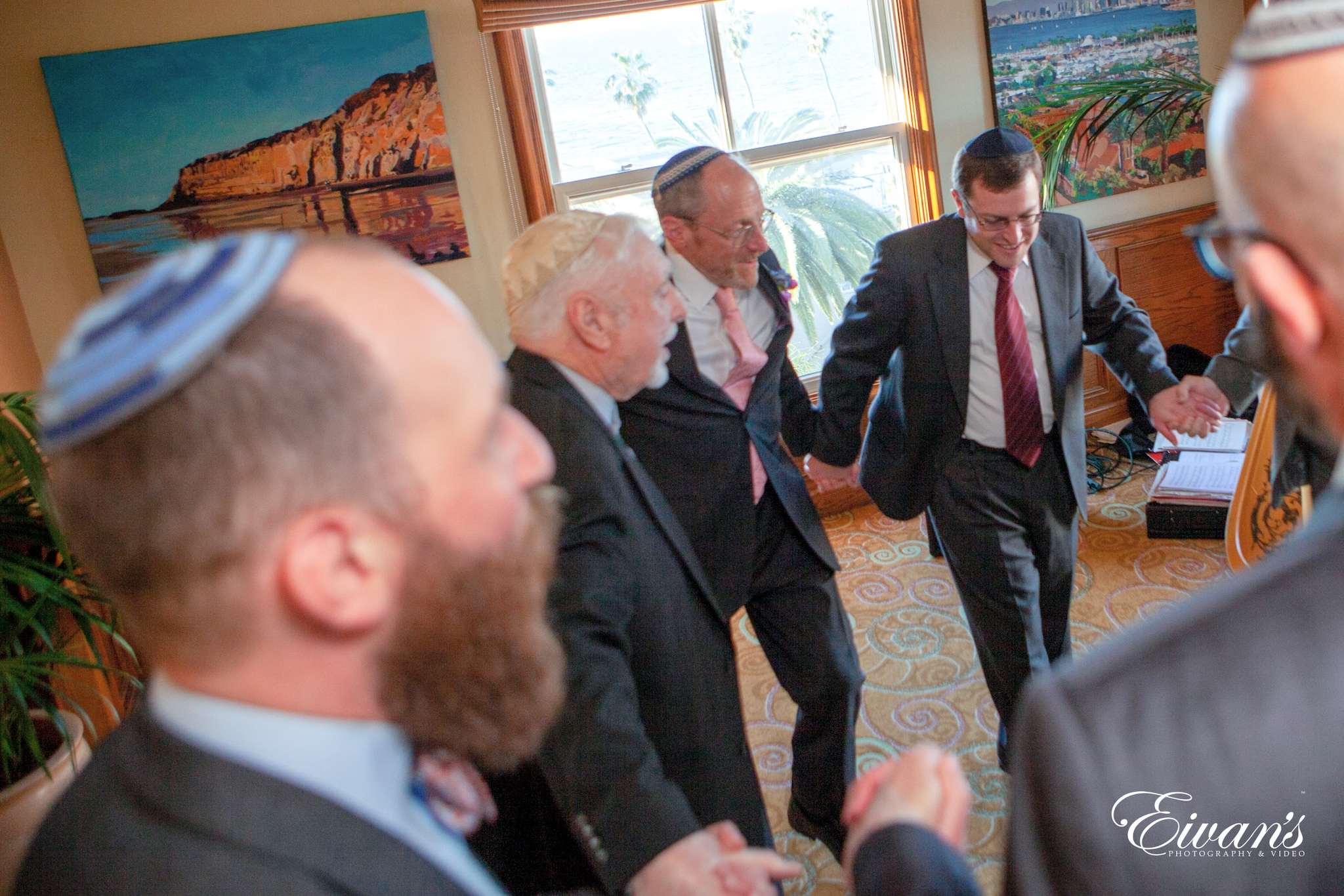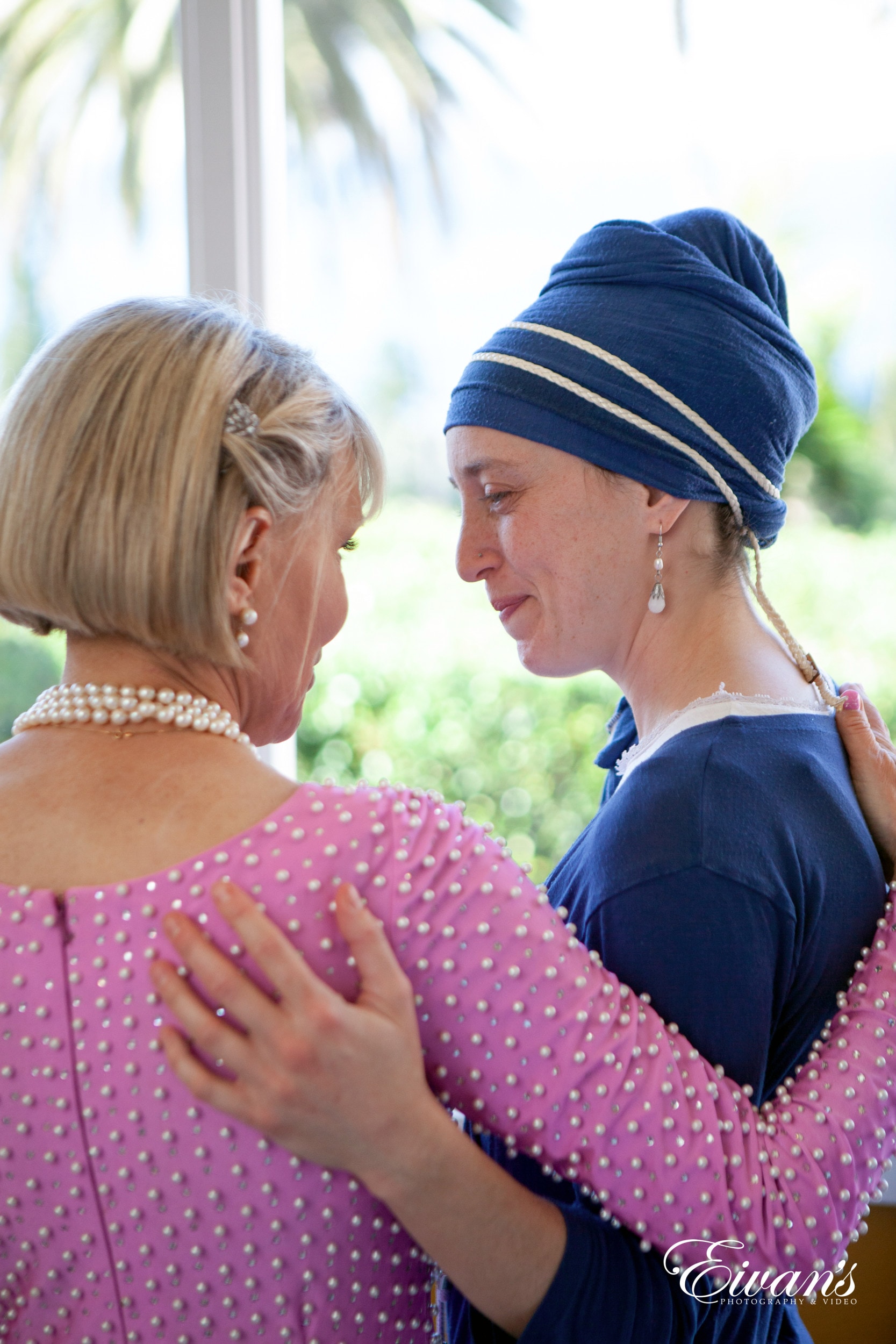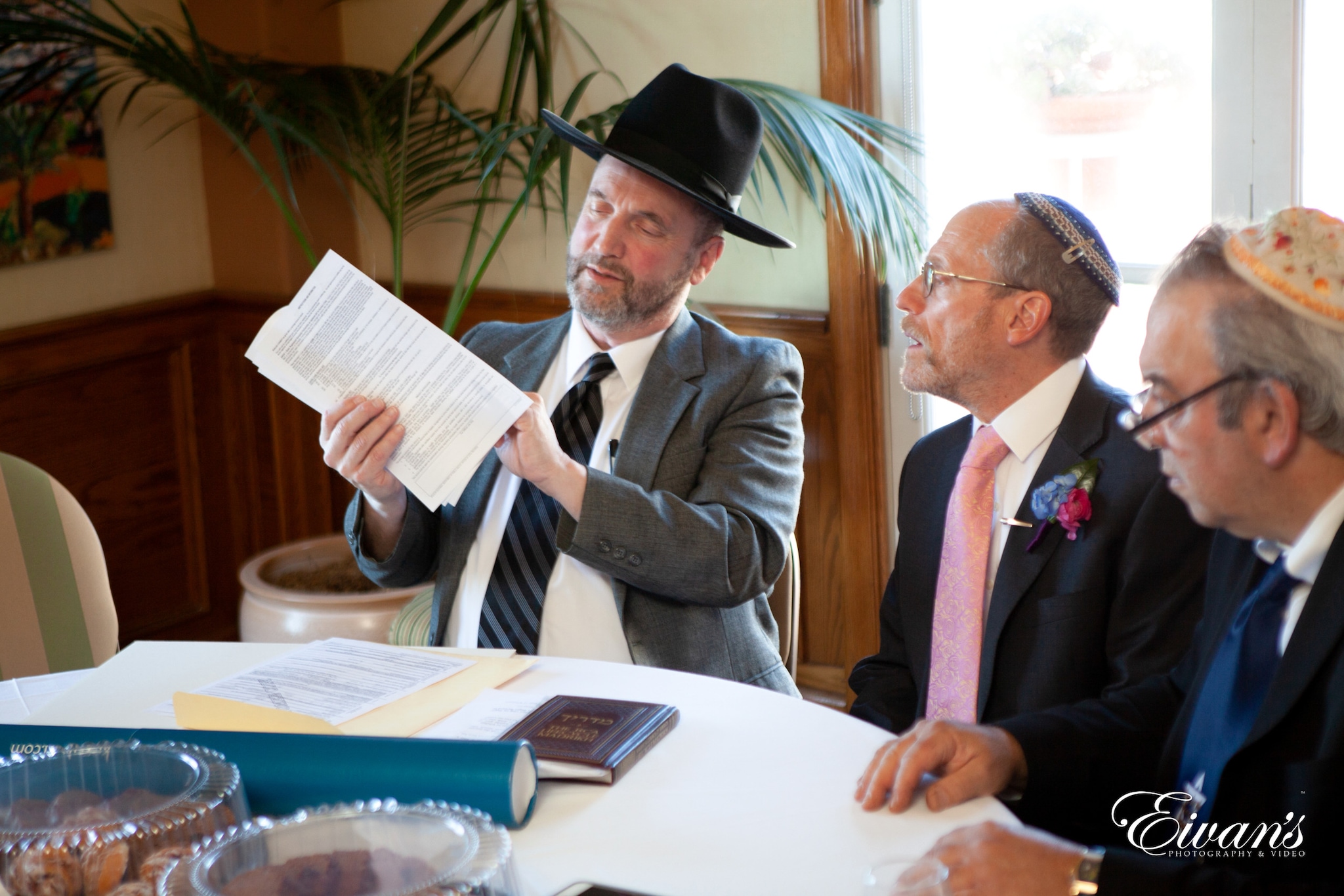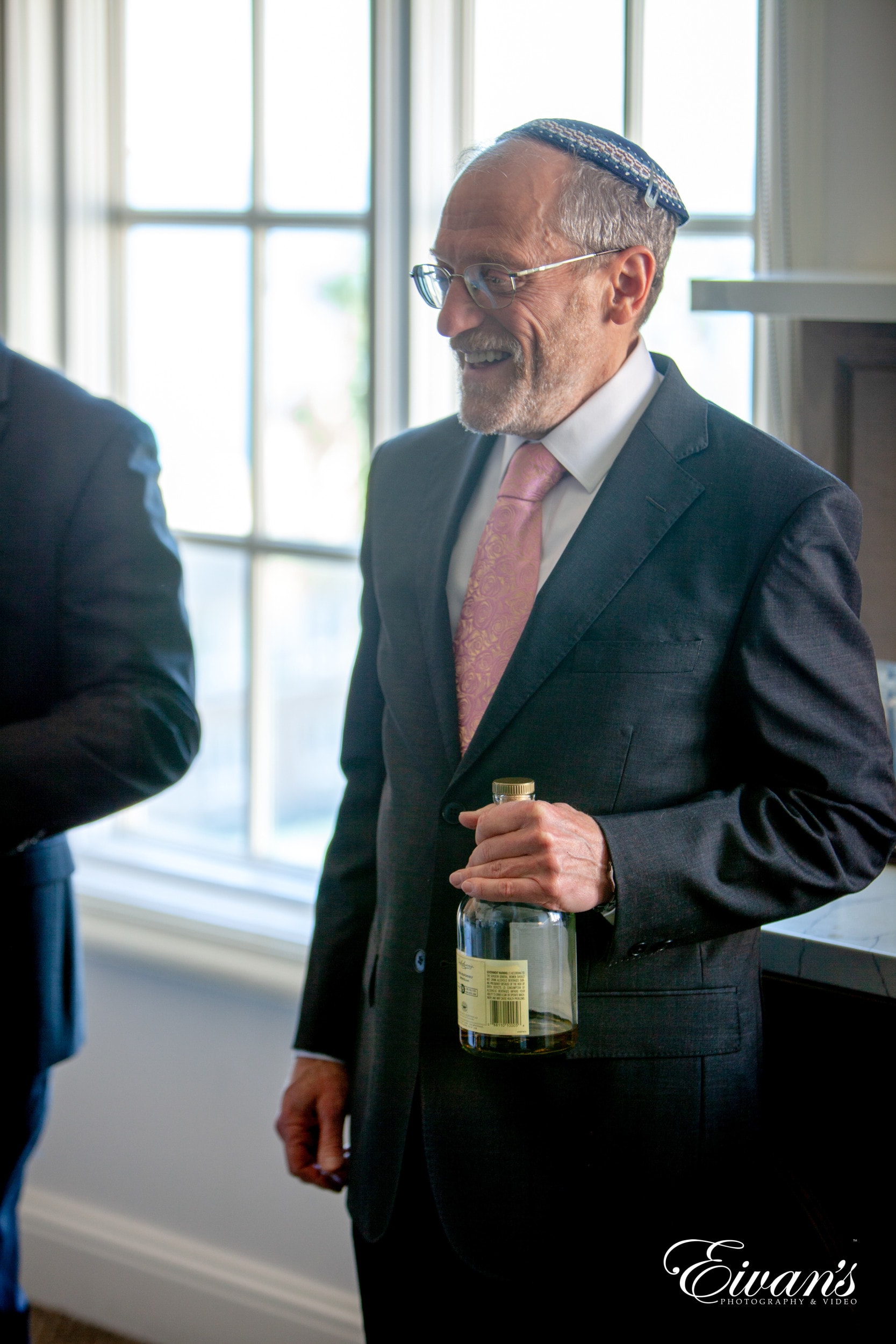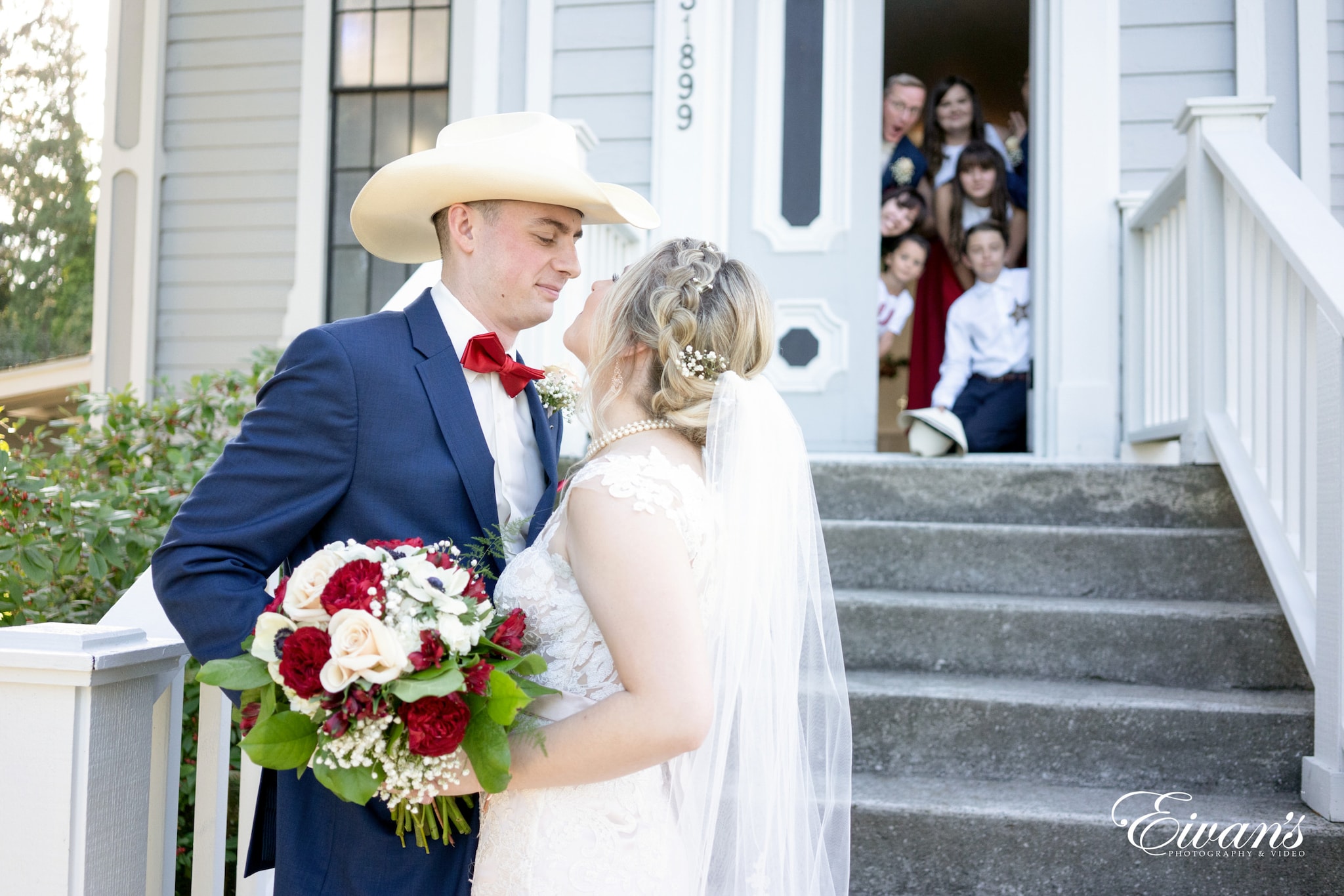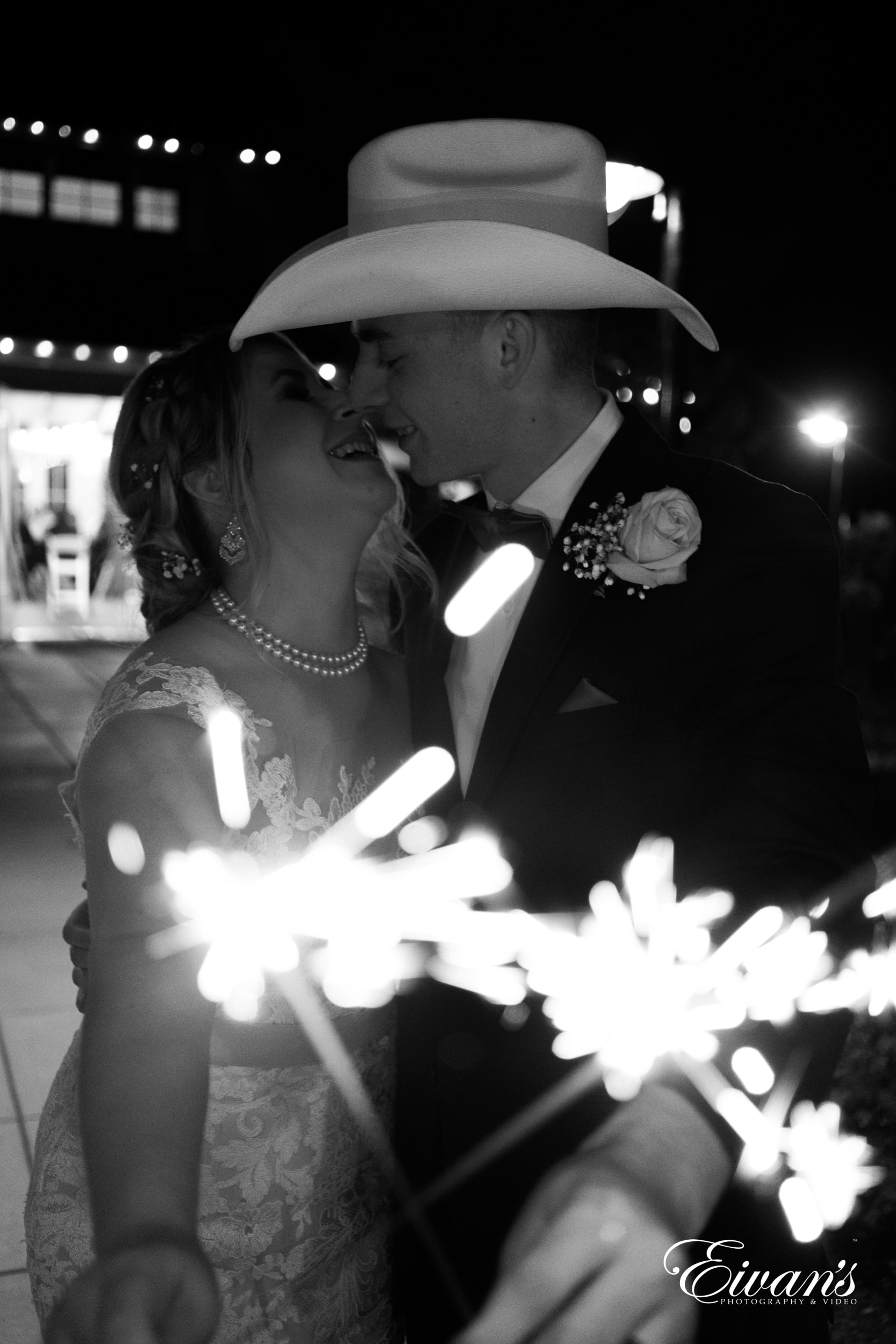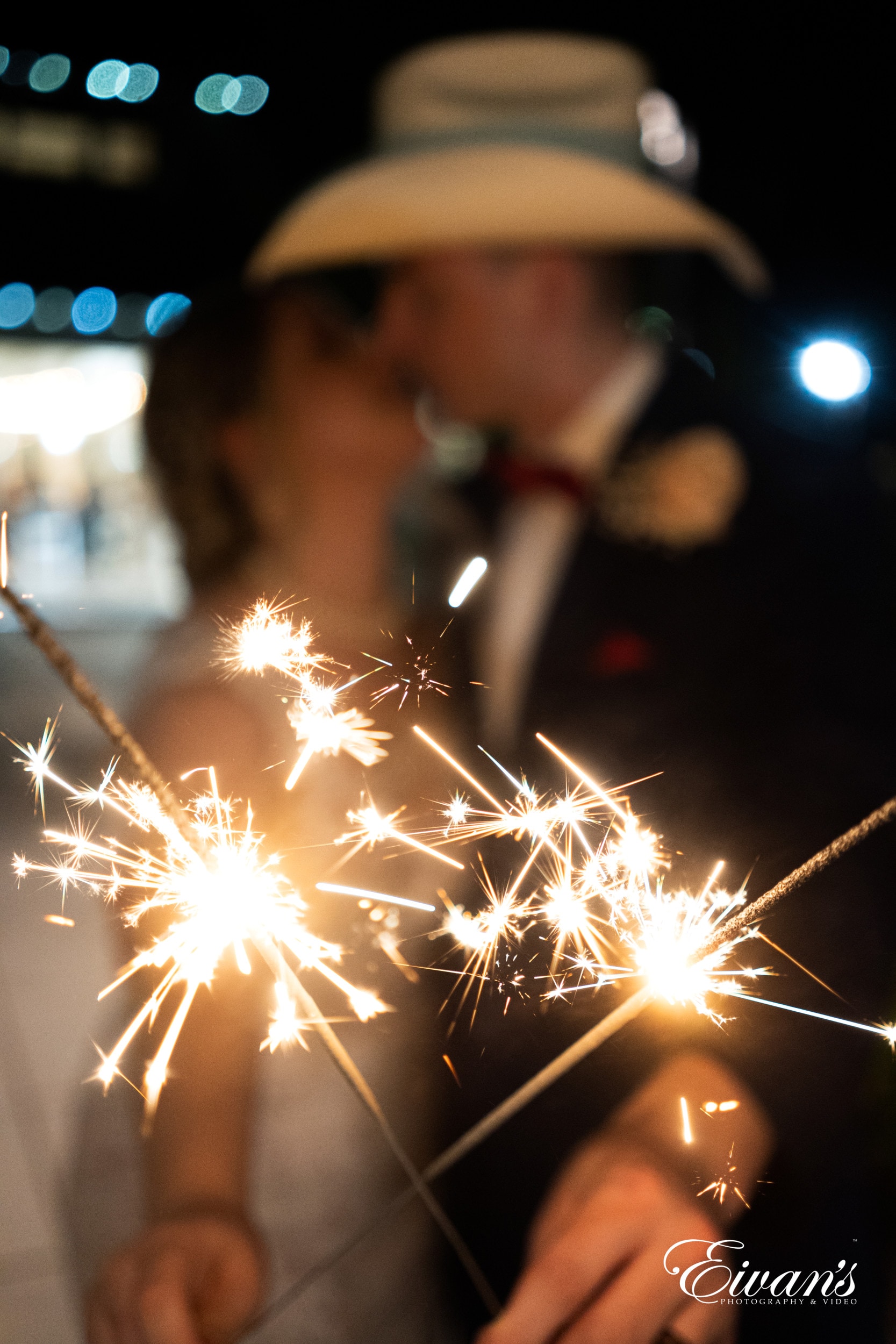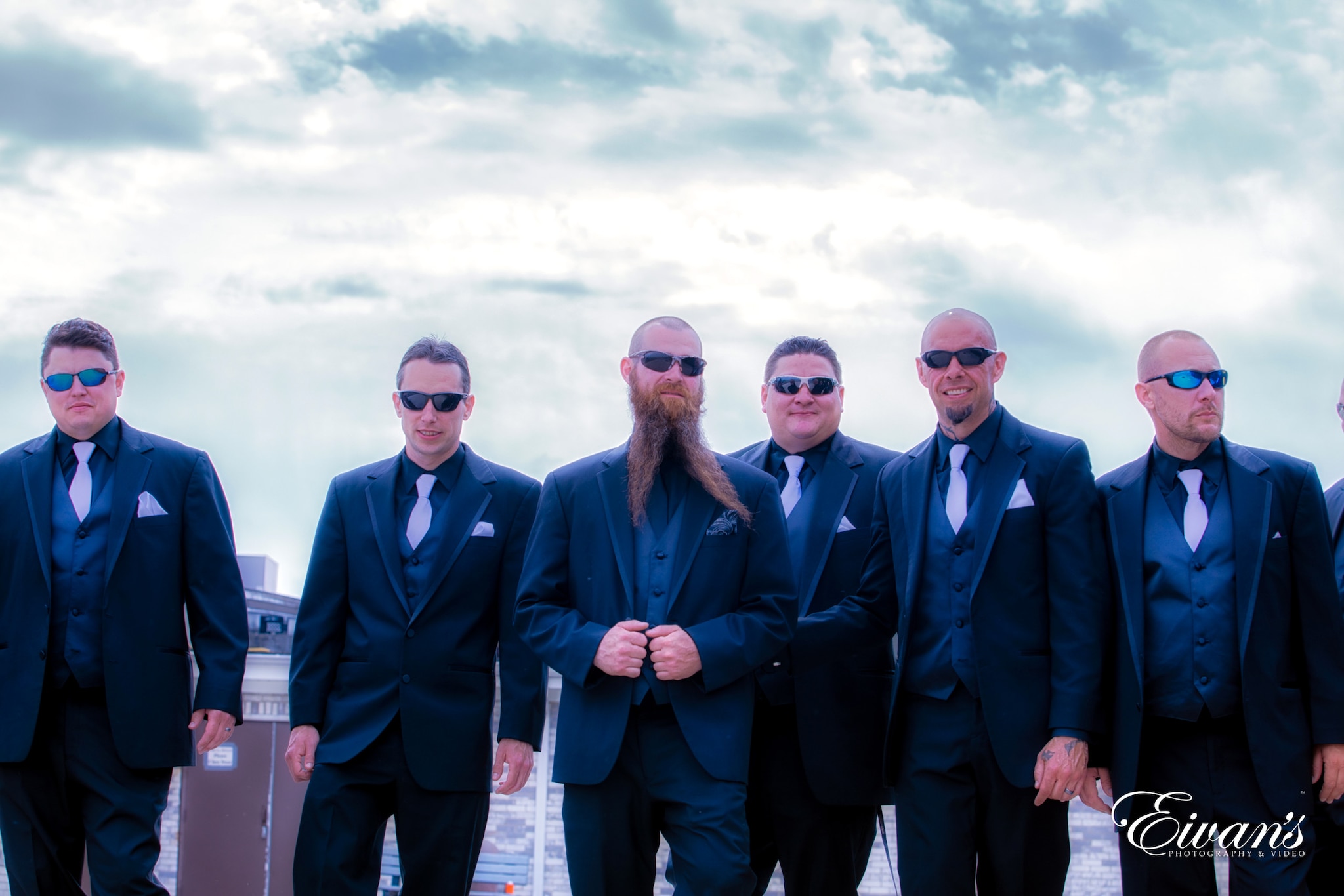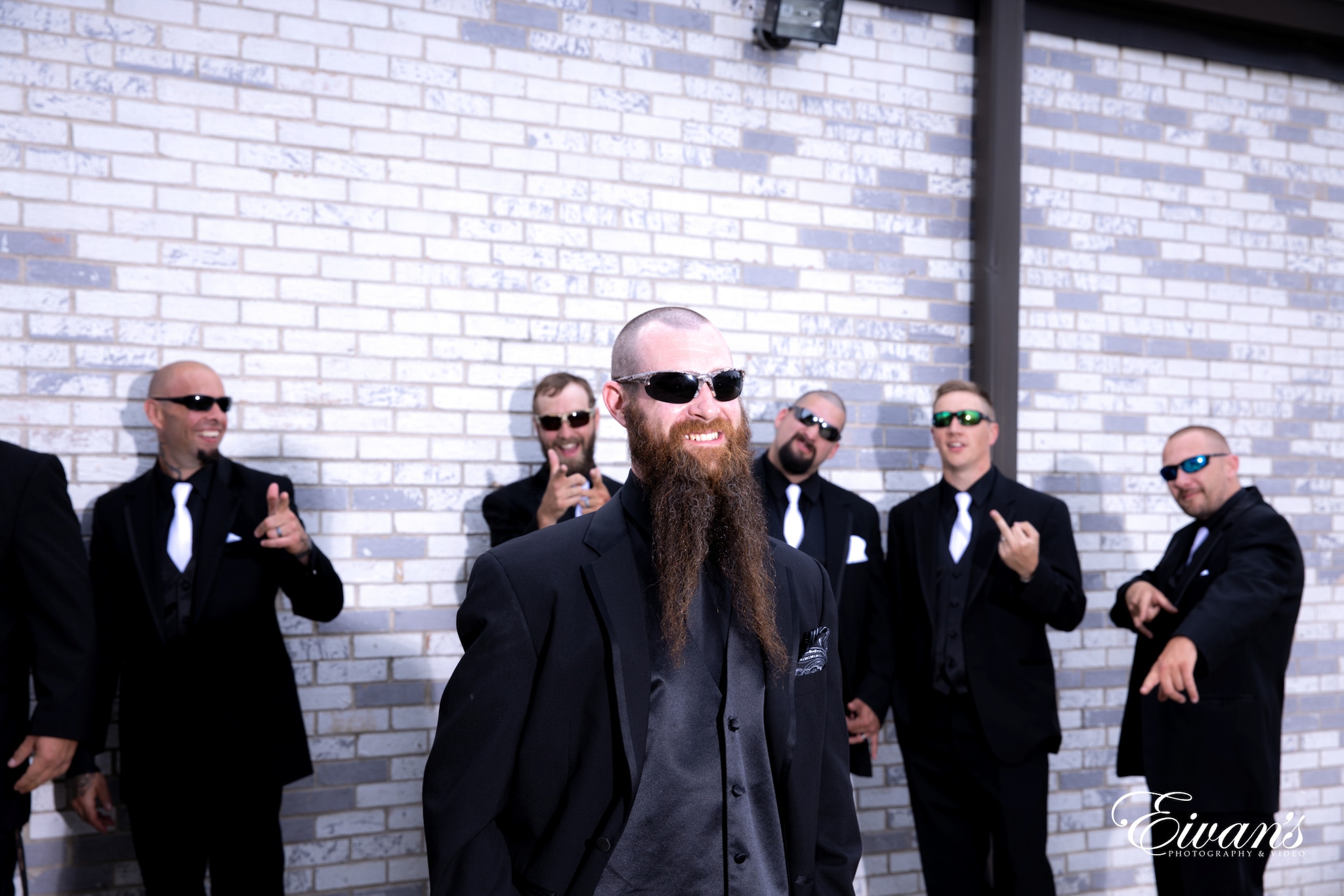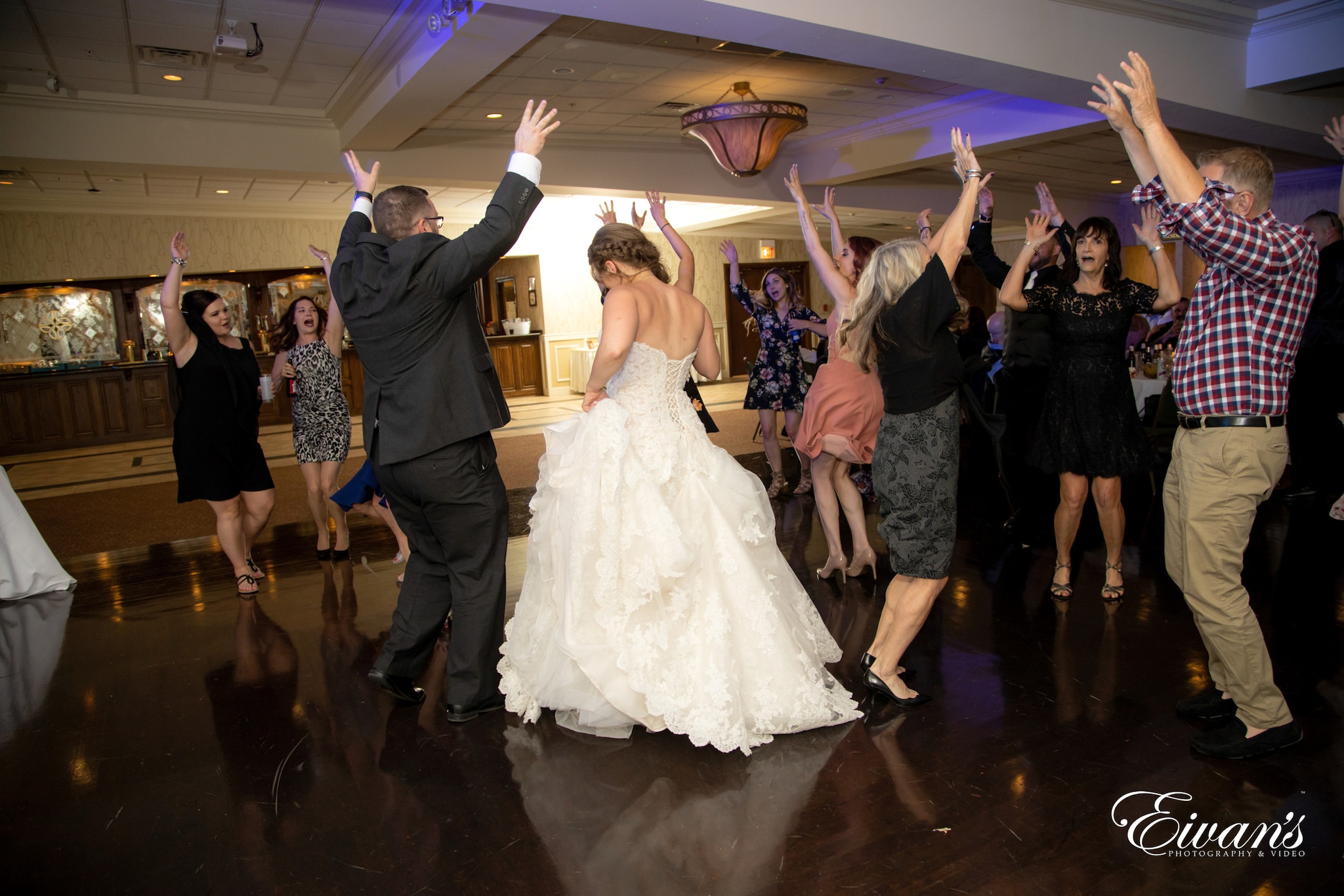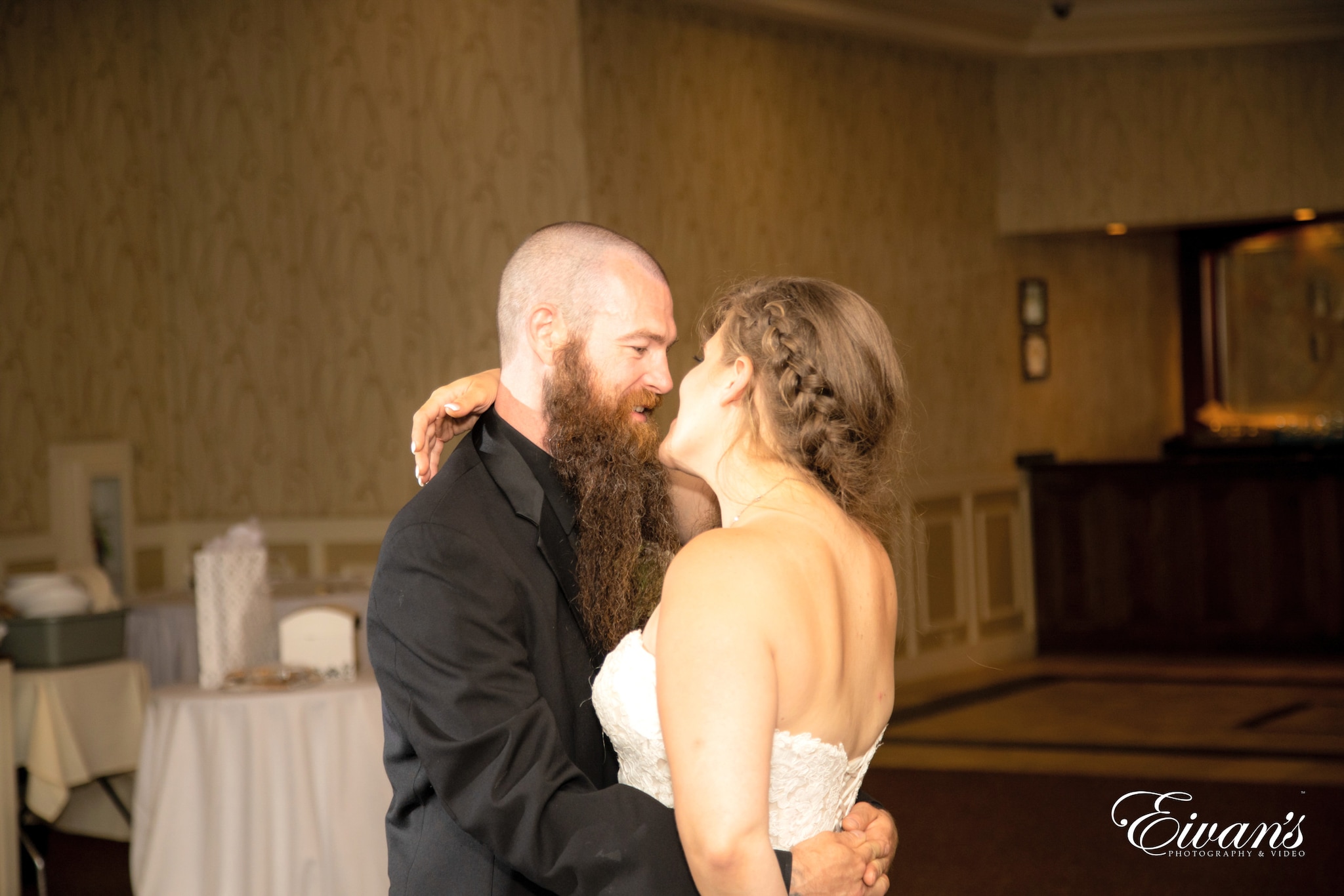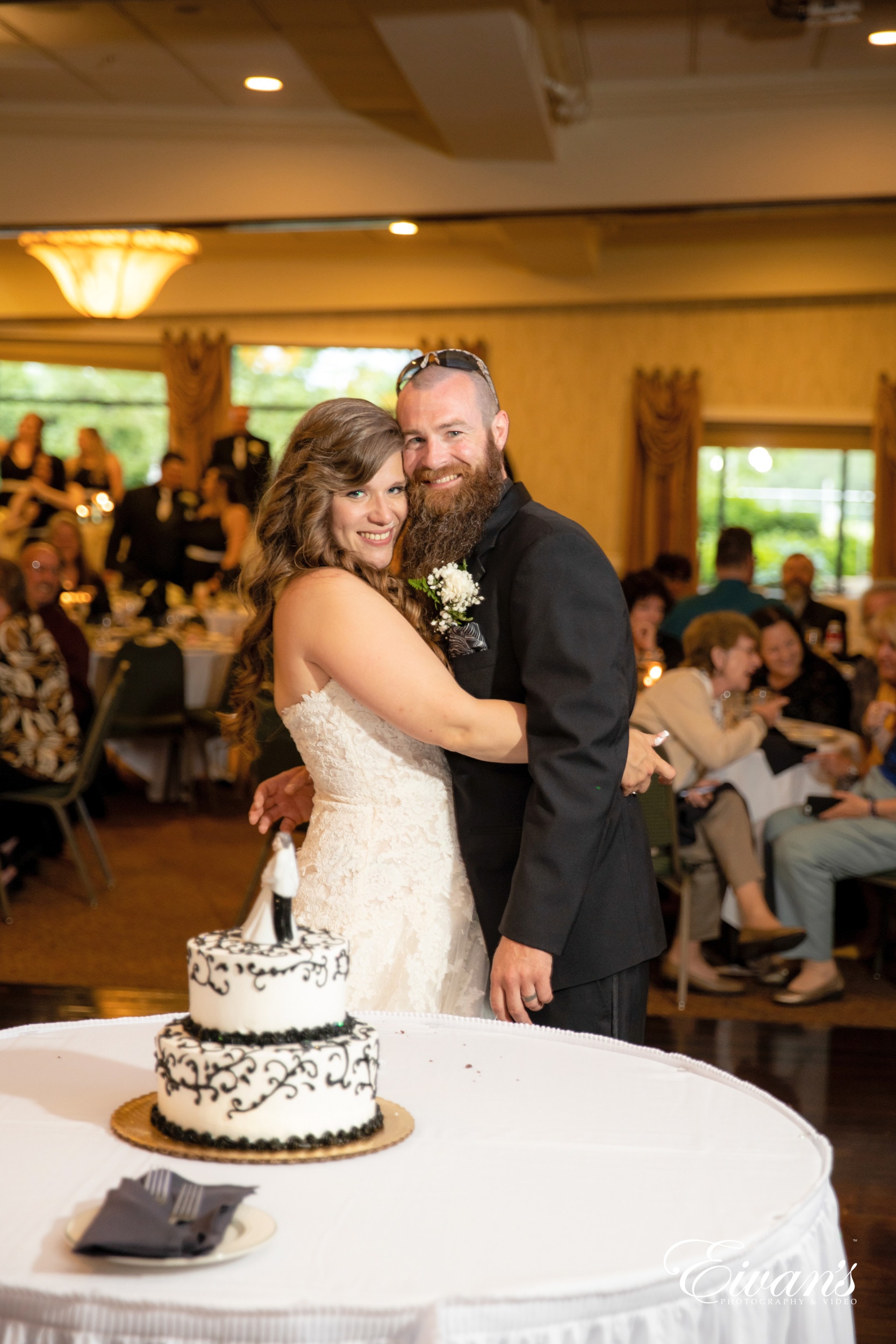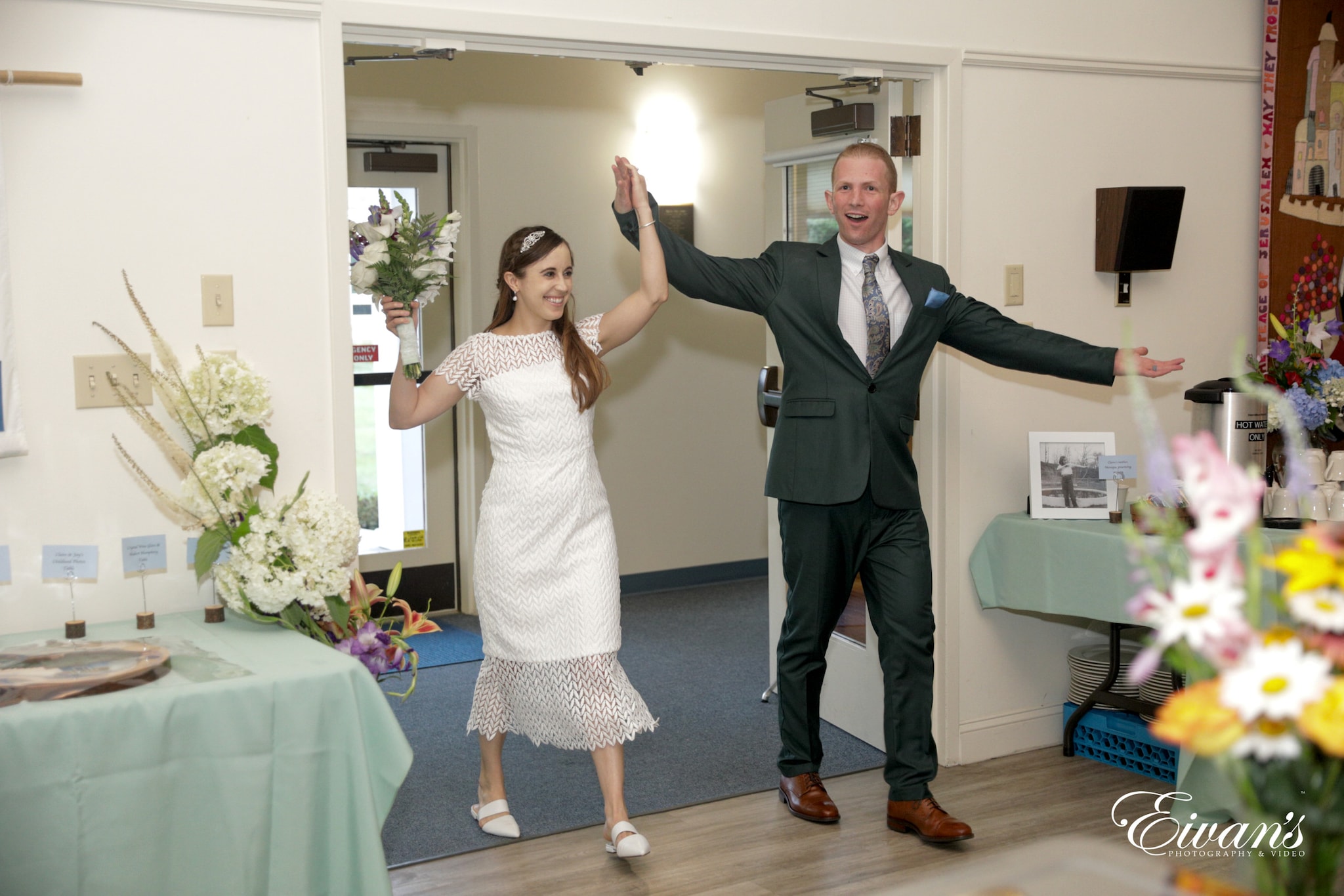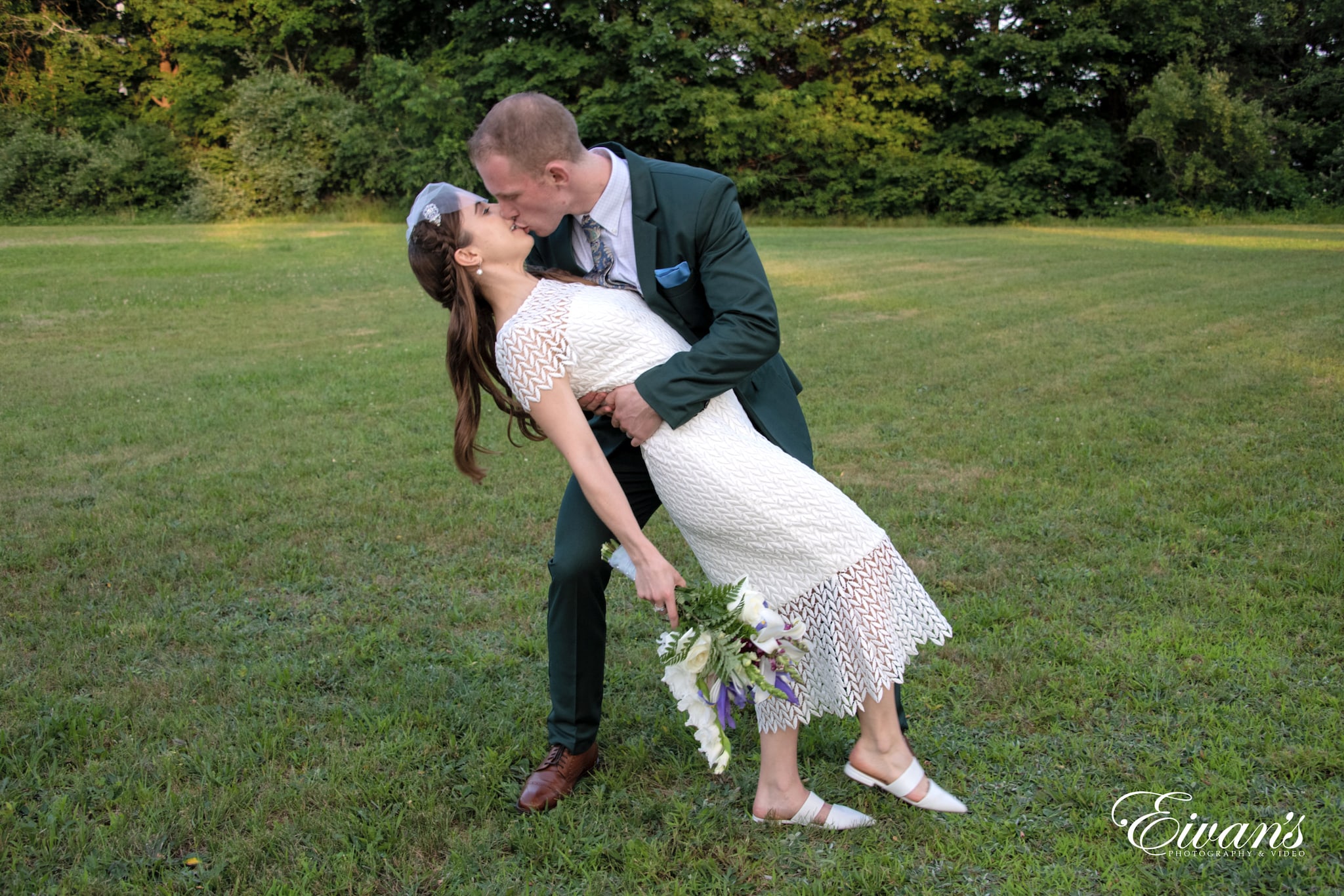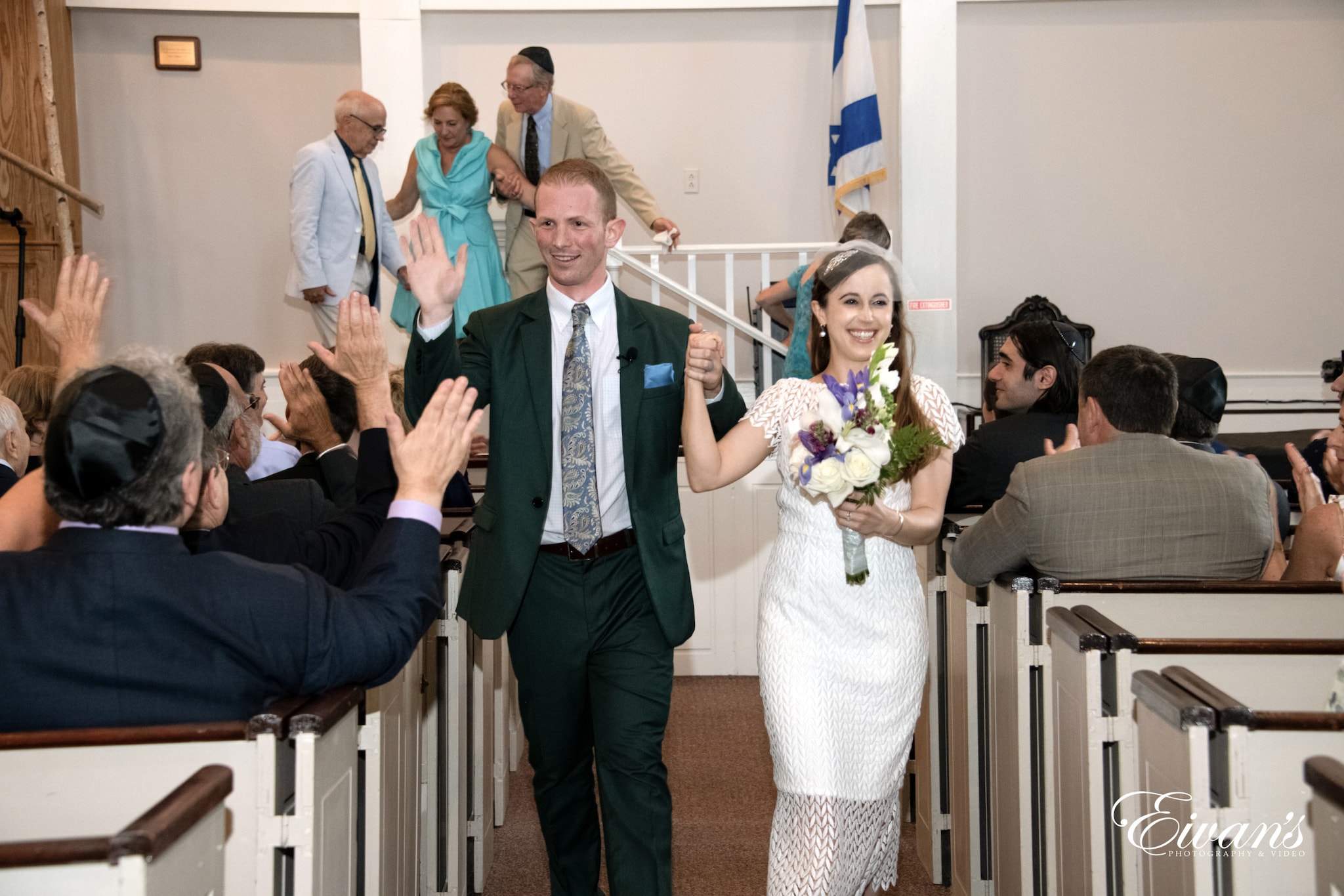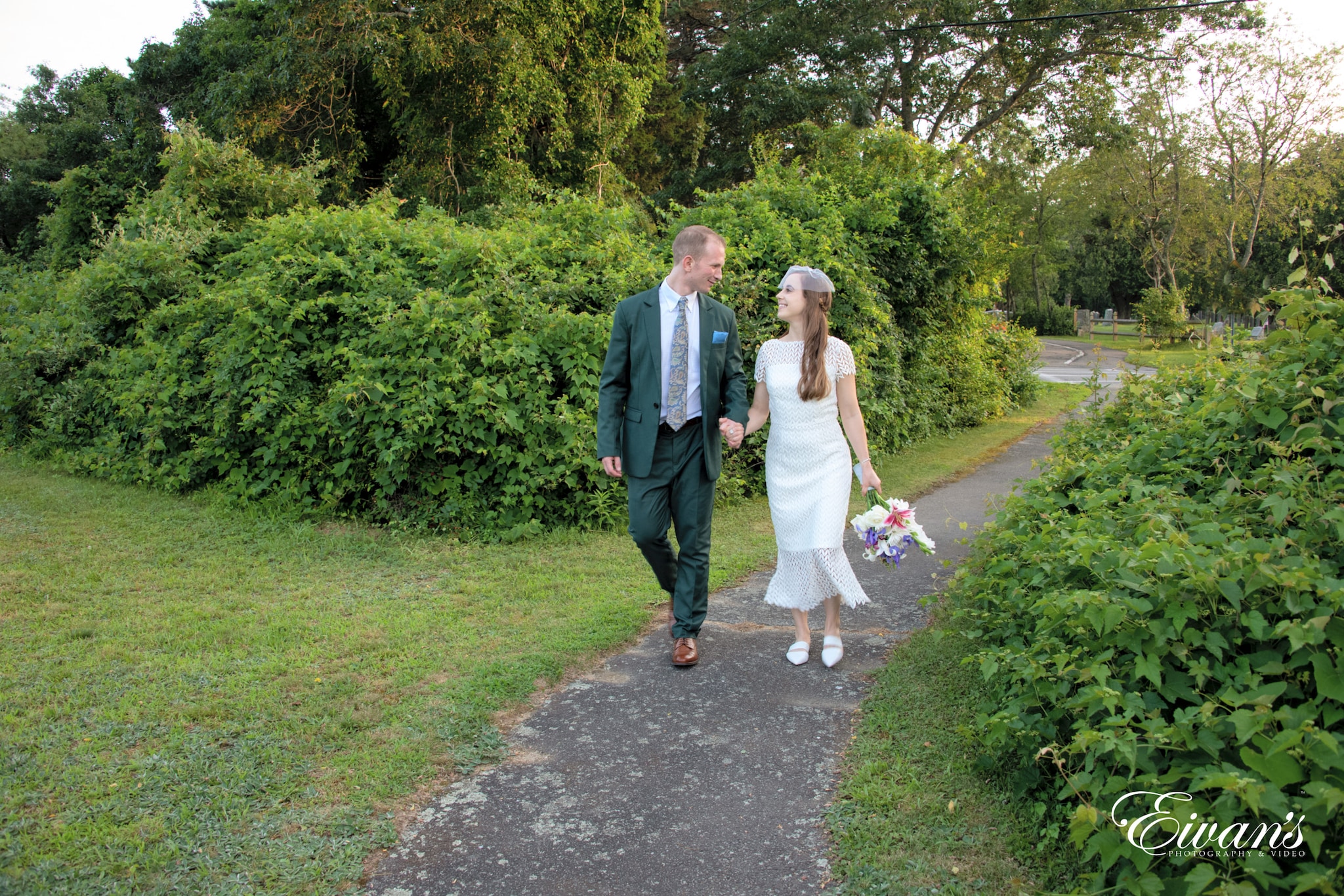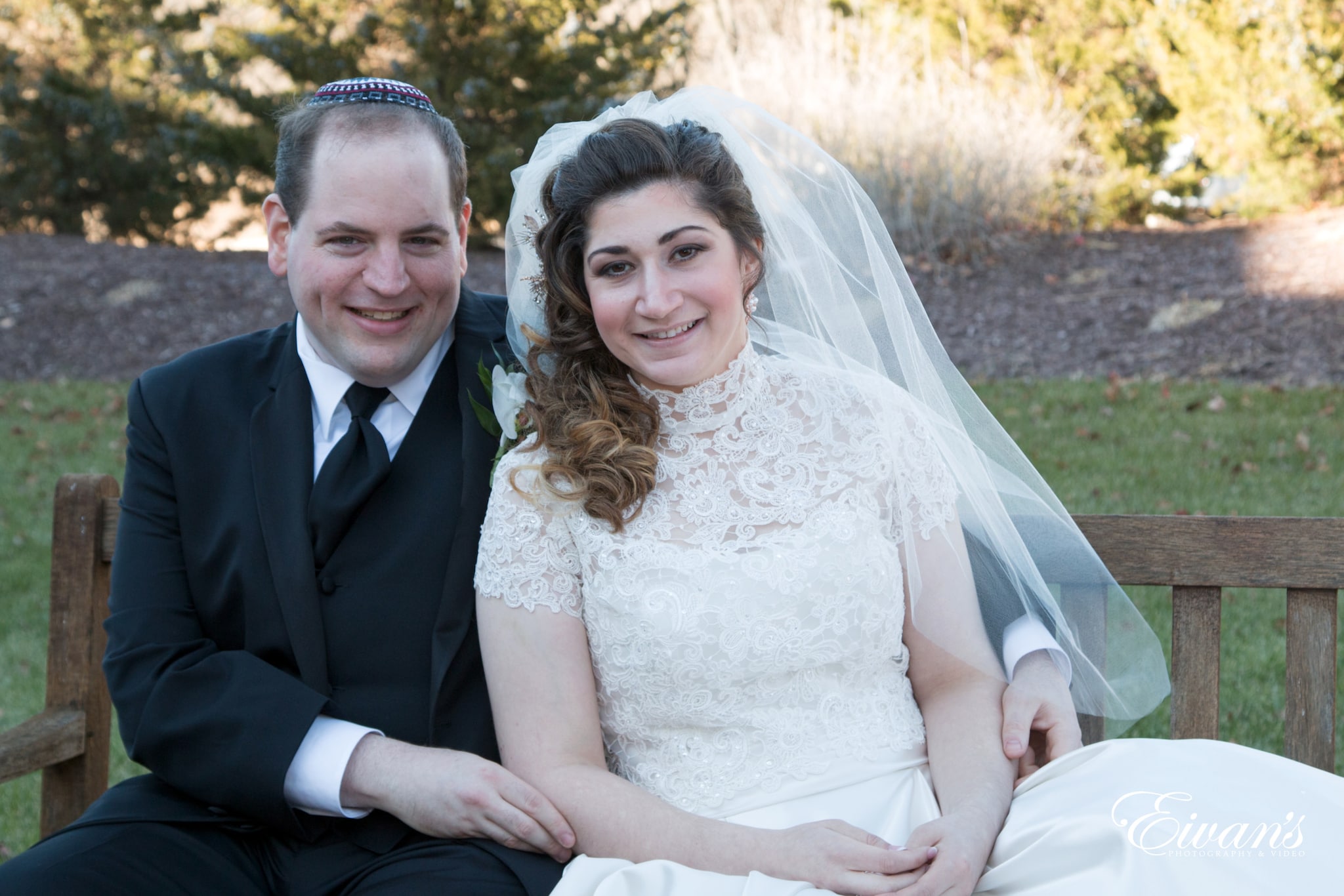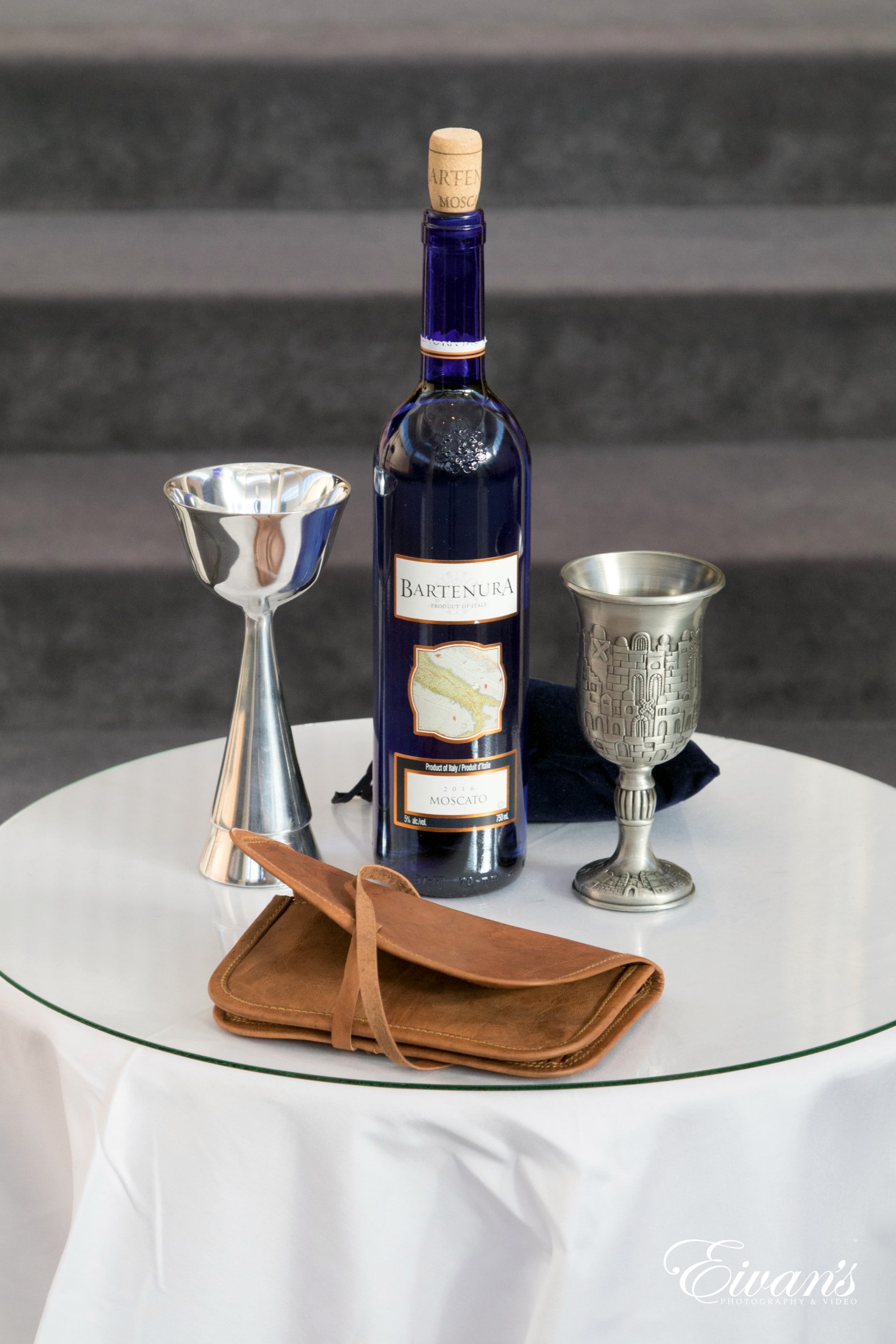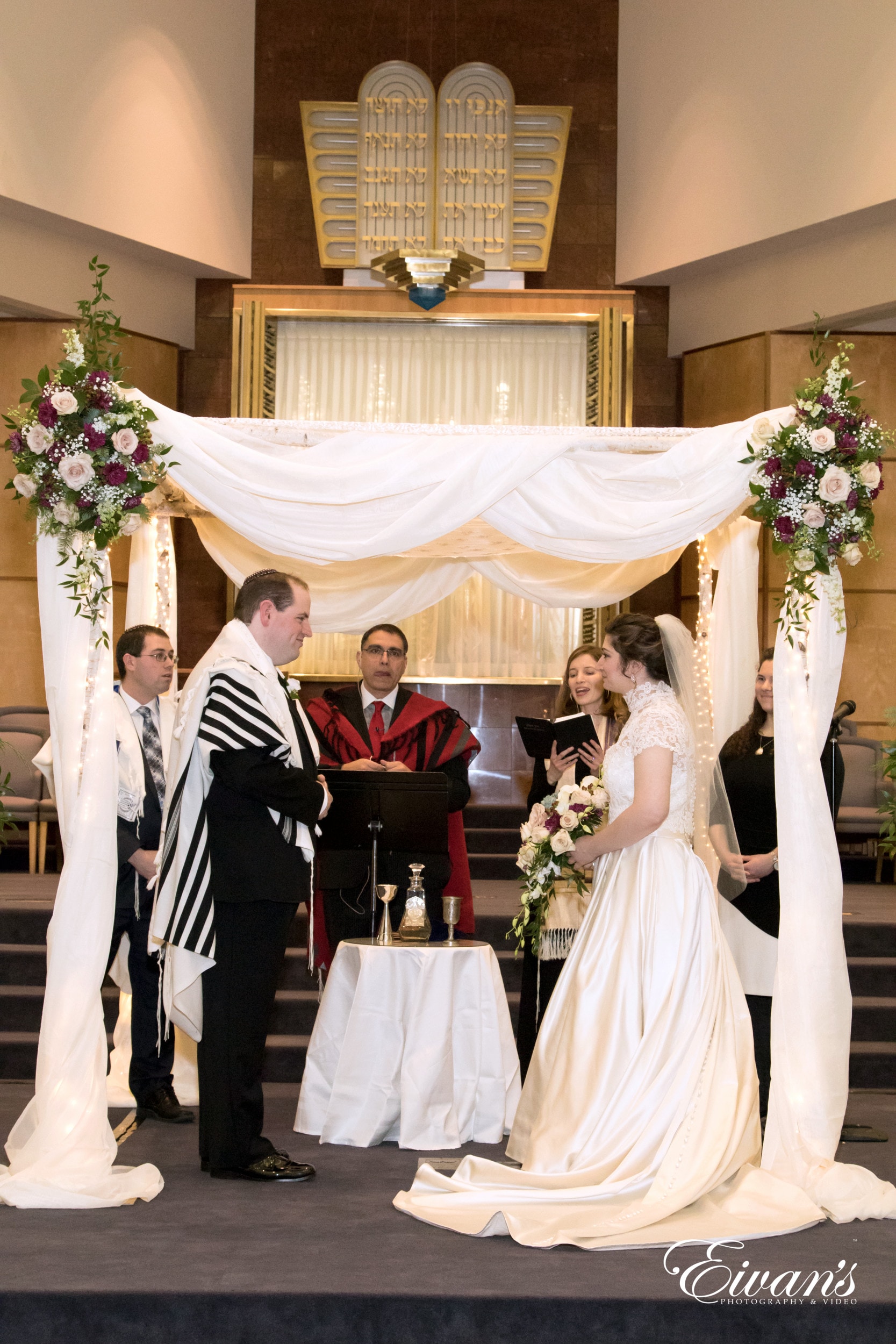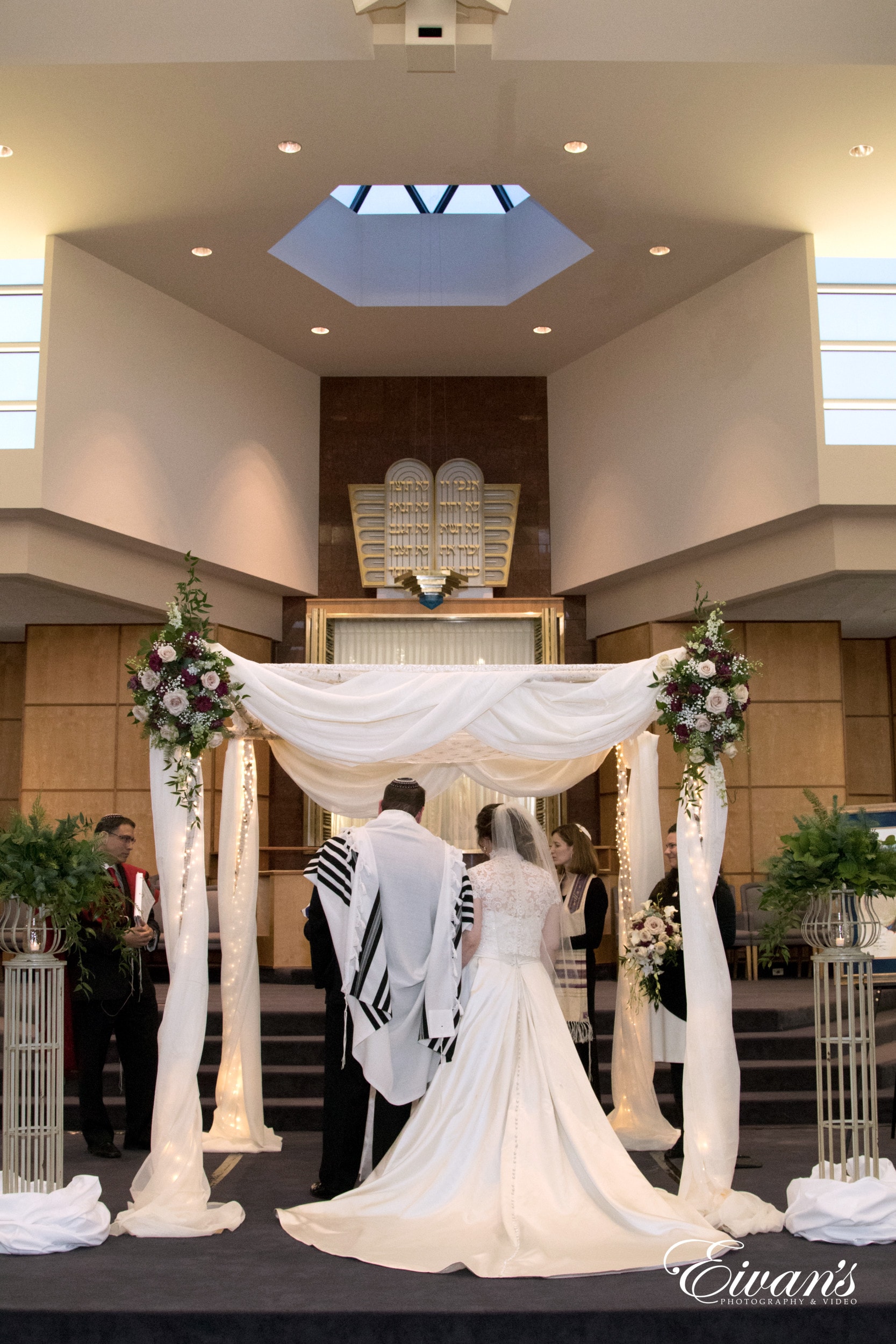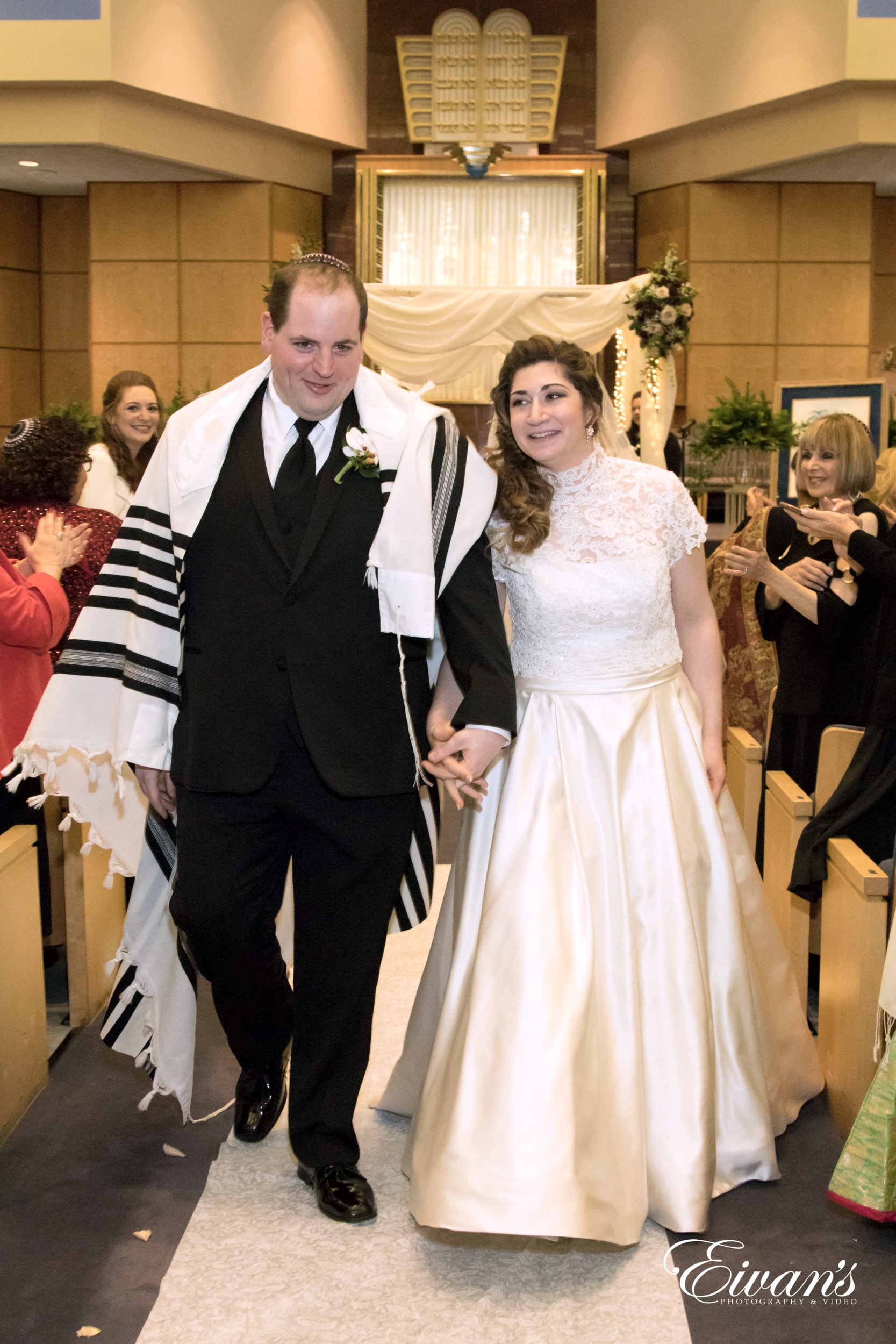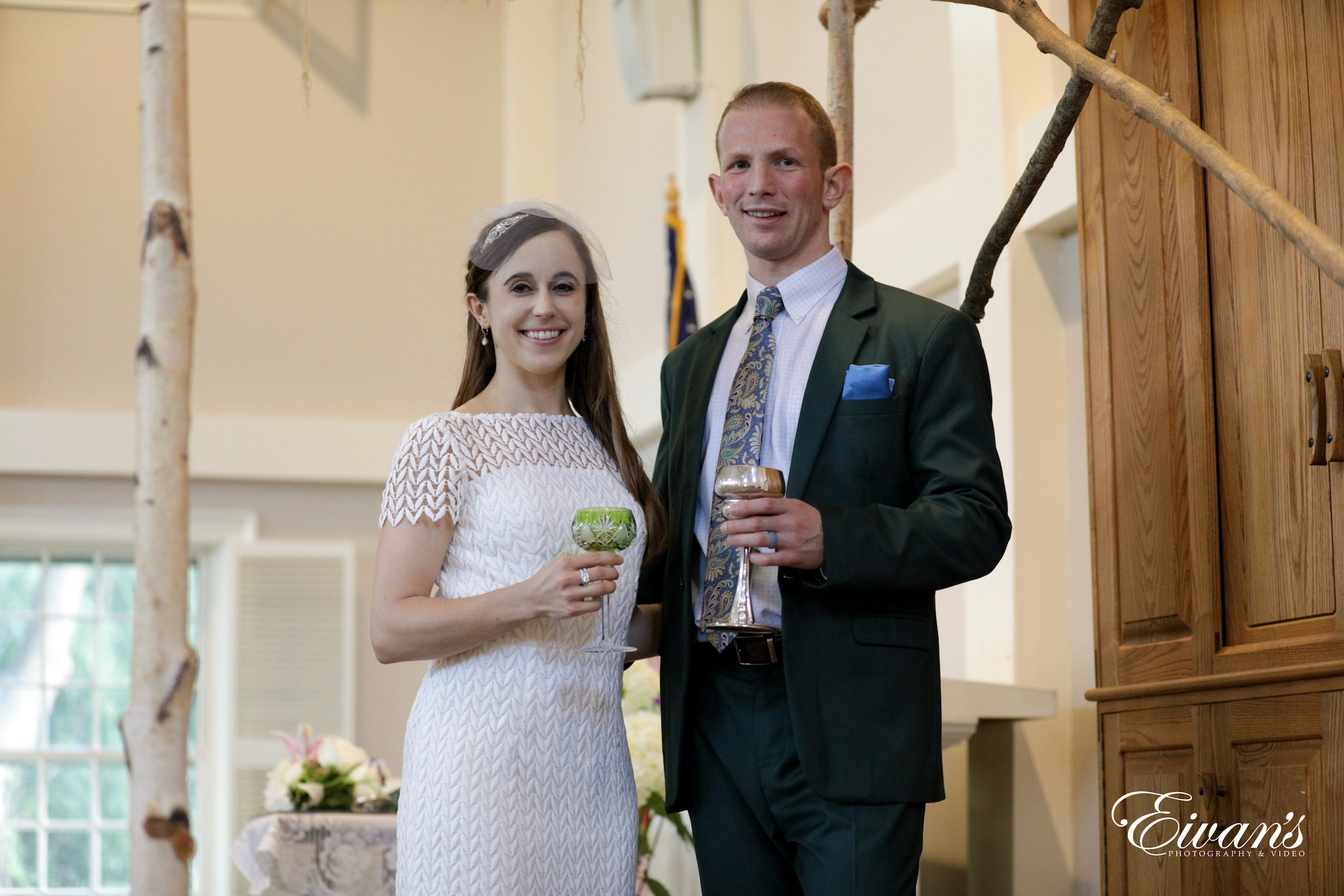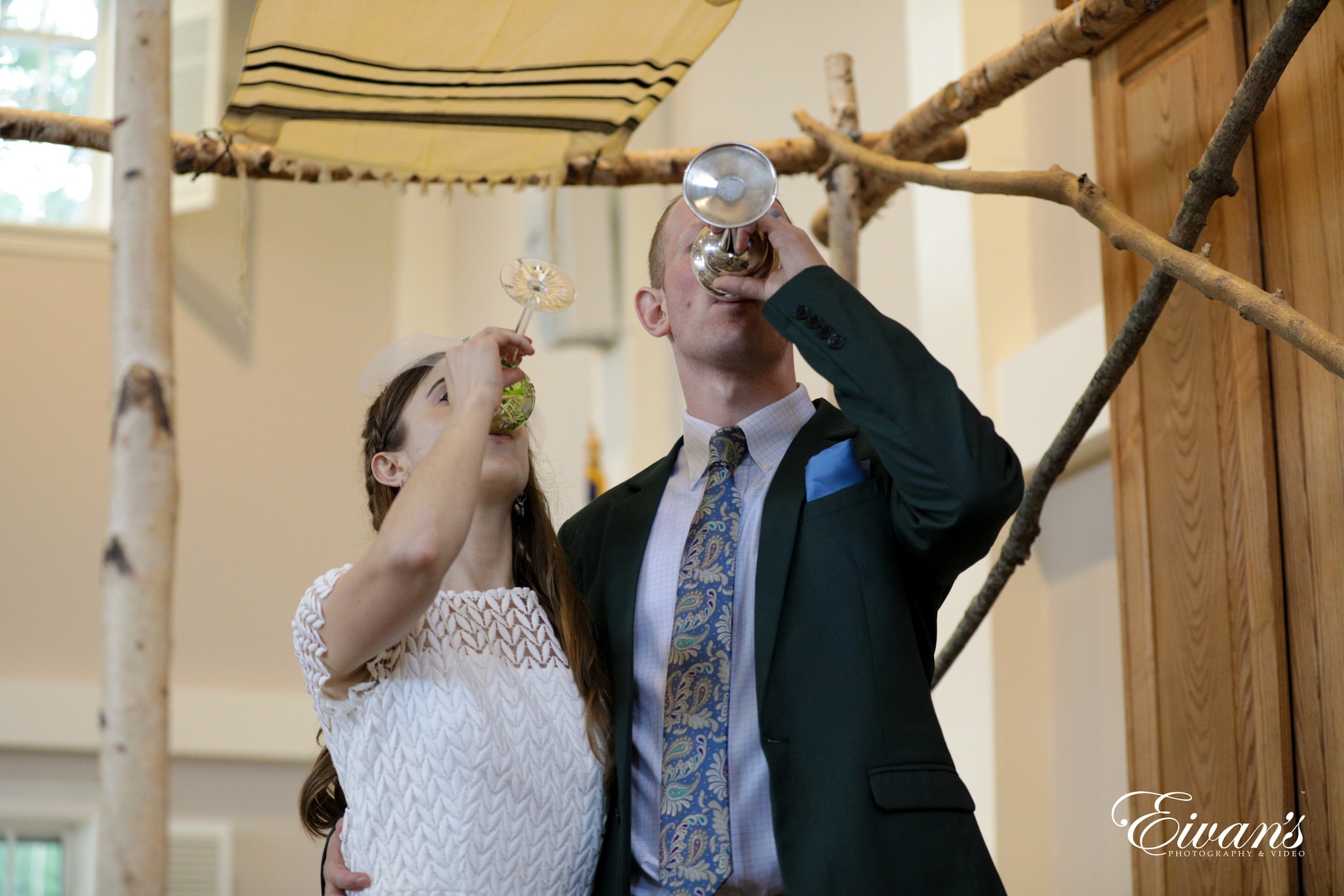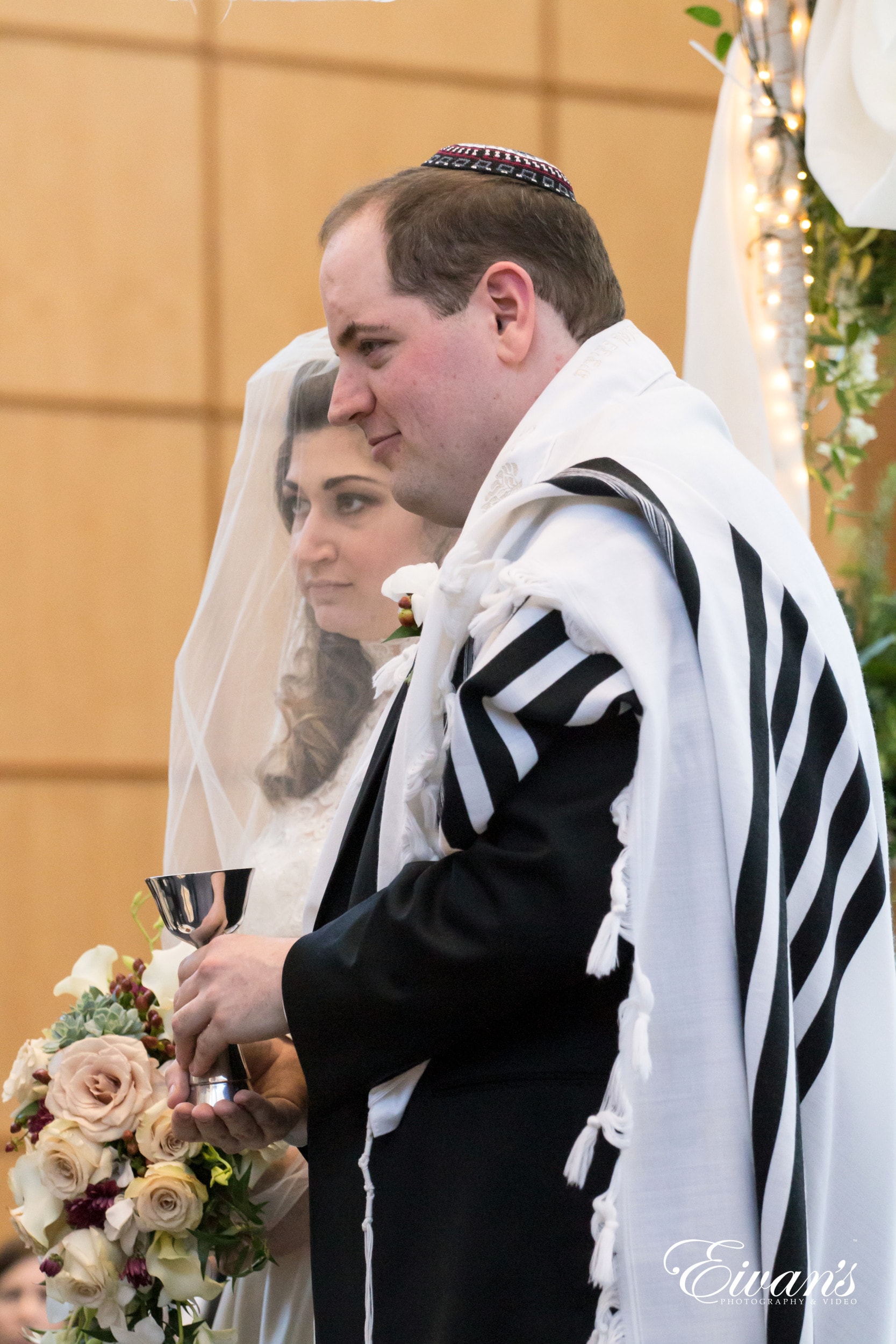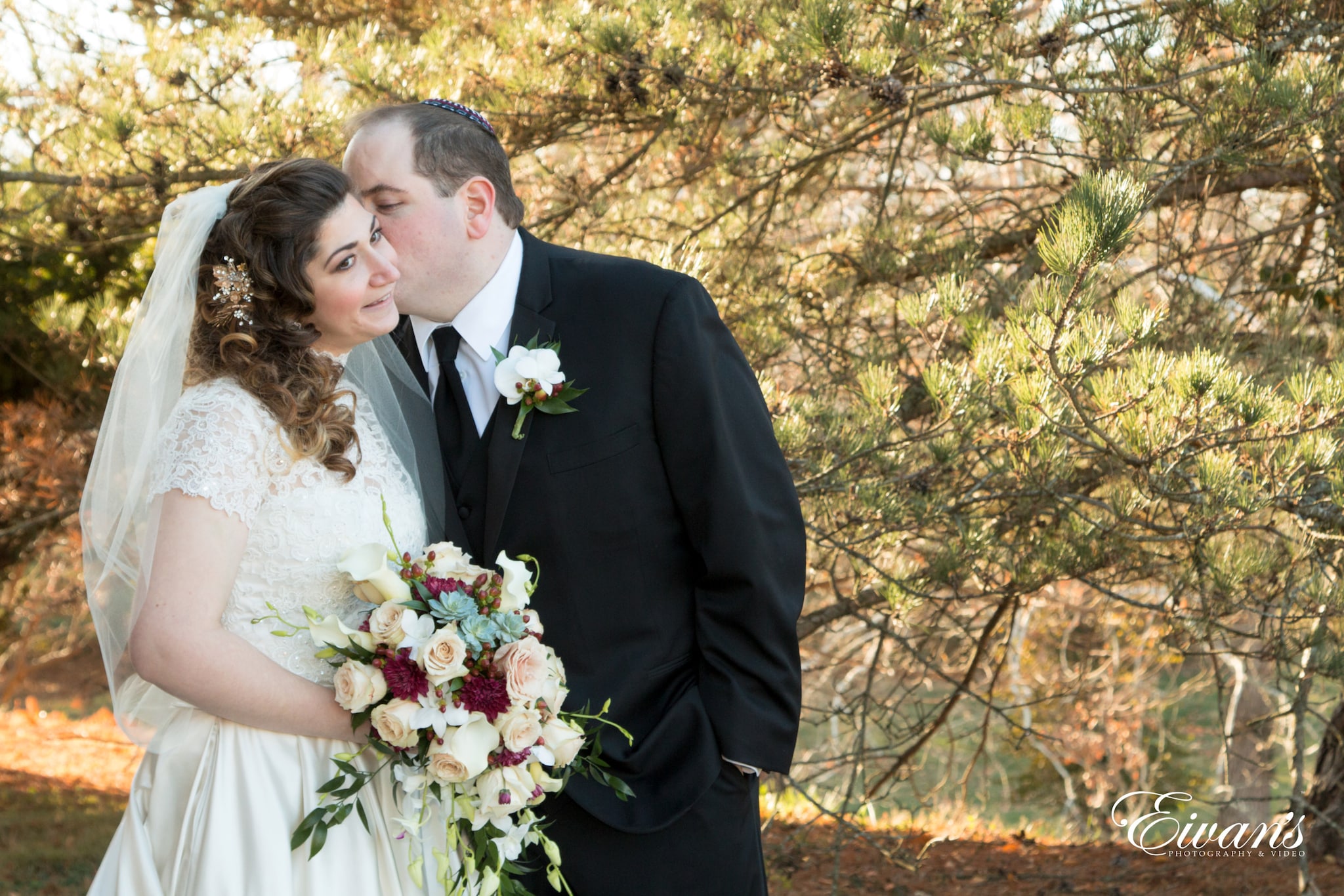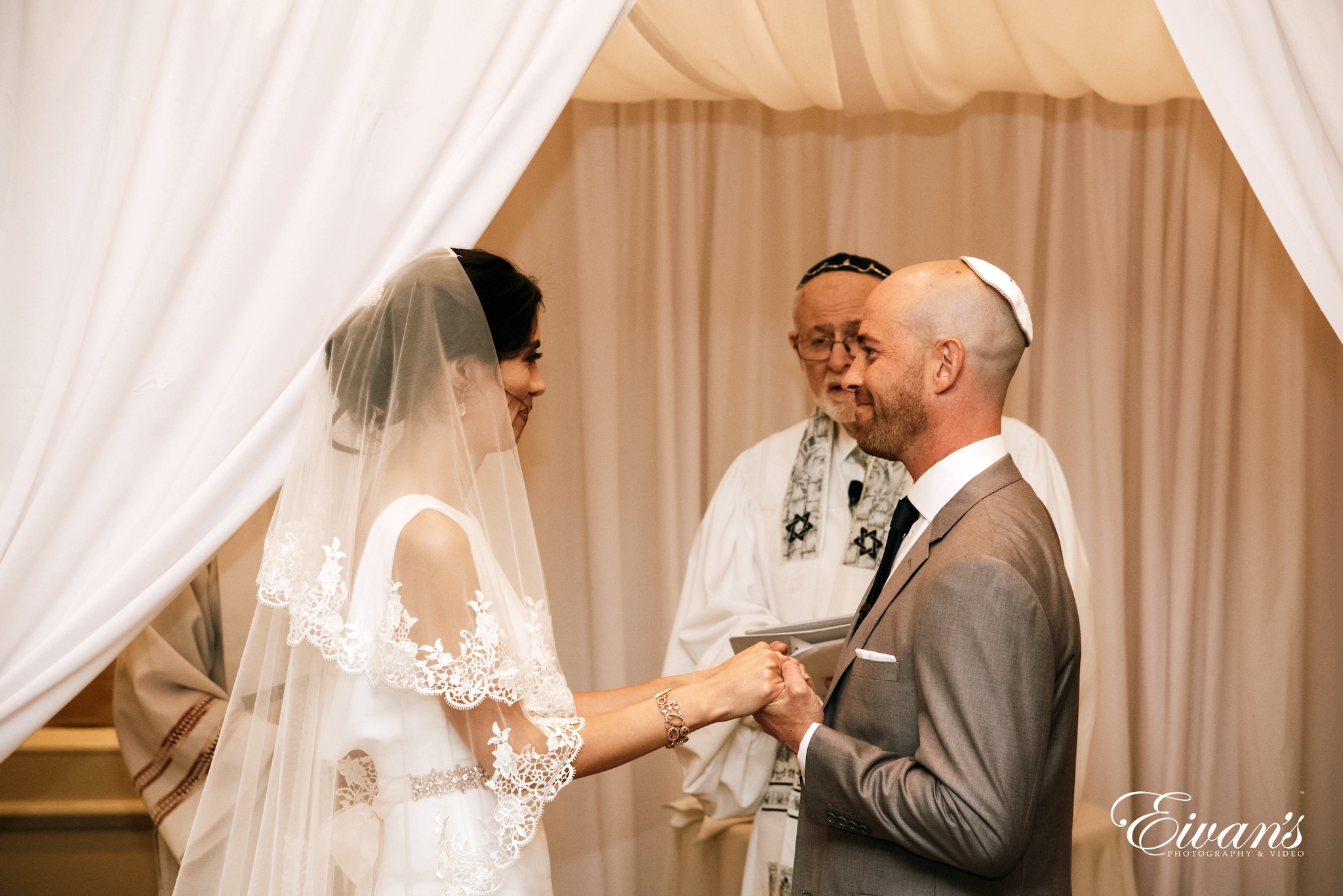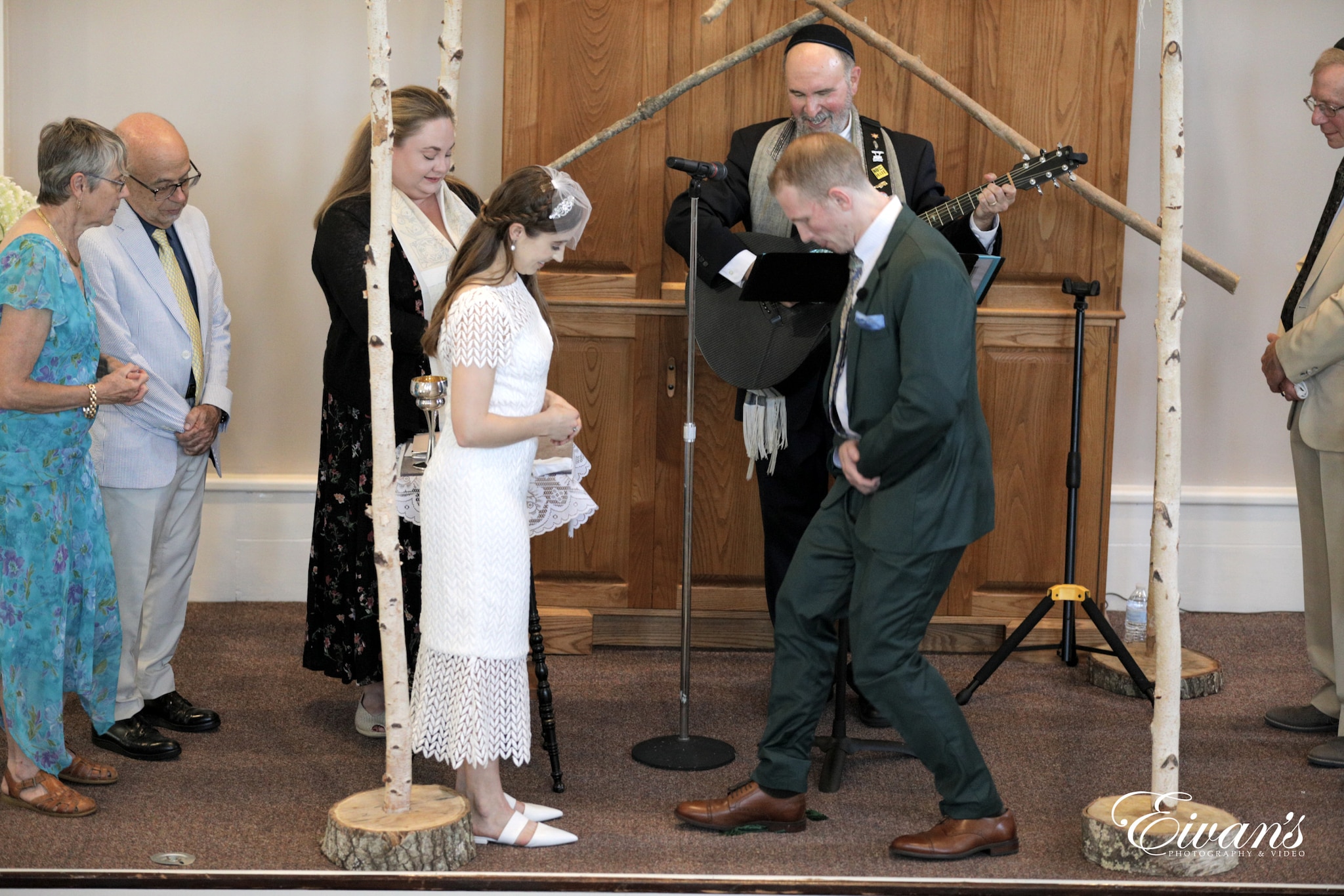Jewish Wedding Traditions That Are Still Valued in a Modern Jewish Marriage
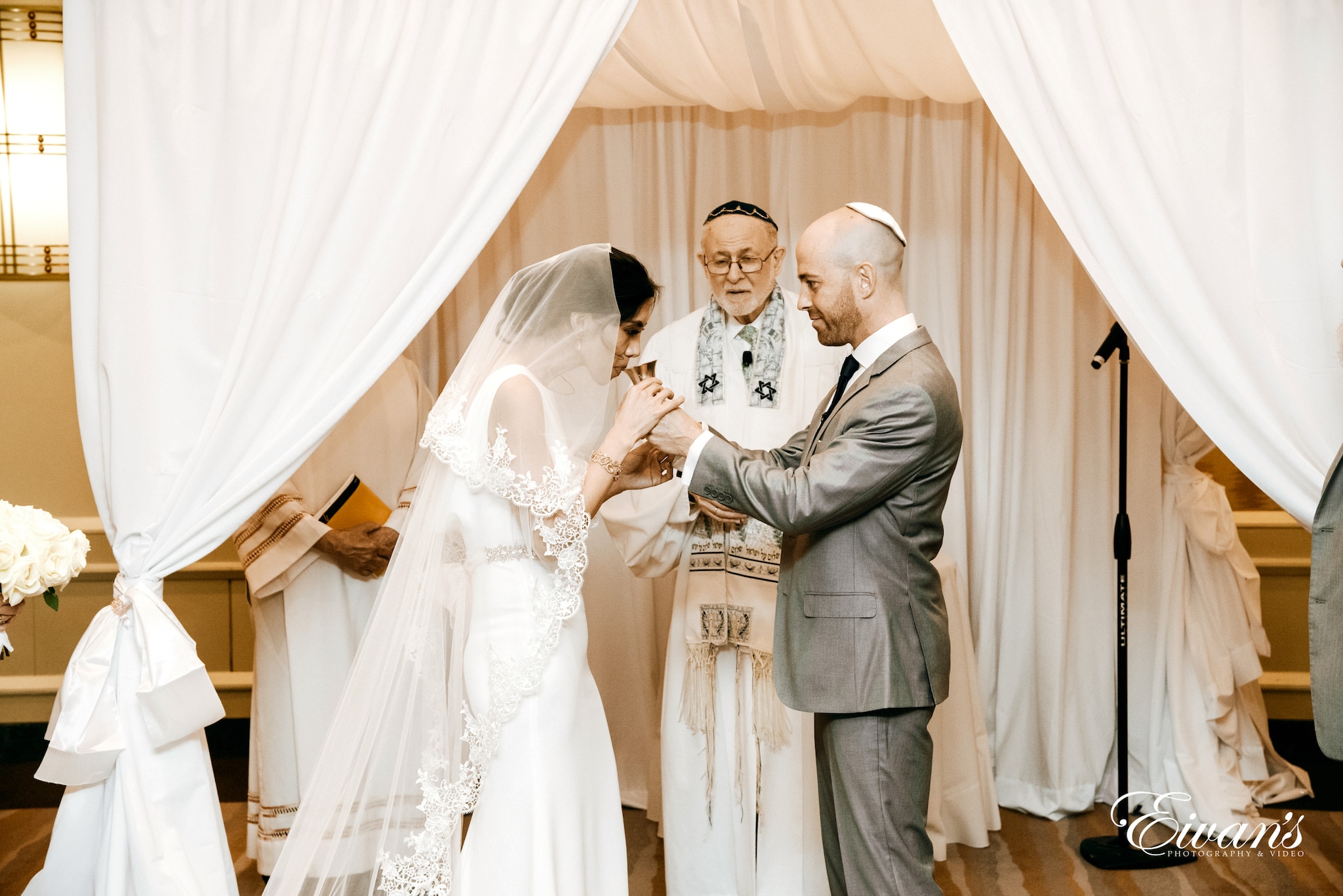
By Eivan’s Wedding Team ![]()
Judaism is the world’s oldest religion dating back to nearly 4000 years. The history of Judaism has a rich heritage of law, culture and tradition that has lingered for a long time.
If you grew up in the Jewish religion going to the temple, you might have seen it all. If you have a traditional Jewish wedding ceremony to attend, it is important to know their traditions and what they mean.
These traditions could be mandatory or optional with most Jewish marriages upholding them. Marriage is highly respected by the Jews and viewed as a holy union between two people. It is an important stage life of the Jews.
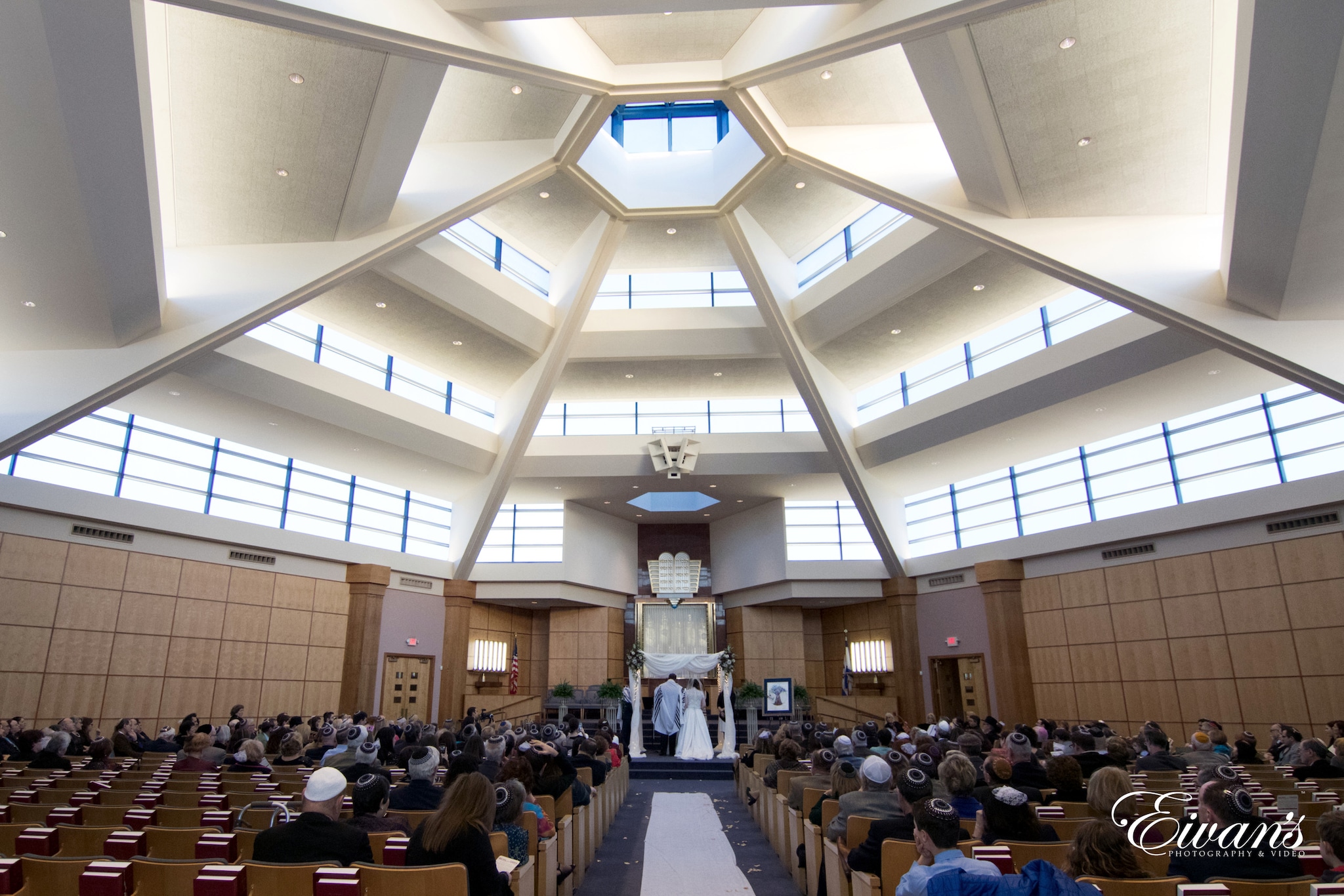
Here are some of the most common Jewish Wedding Traditions
Aufruf
This is a tradition that involves calling out to Yiddish. It happens on the Shabbat before the wedding day. In this ceremony, the couple recites an aliyah before and after reading the Torah.
The Rabbi blesses the couple and their upcoming big day. After that there can be a small ceremony. The guests may toss raisins, nuts and candy to the couple to wish them a sweet life.
Fasting
It is a wedding custom for Jewish couples to fast on their wedding day. But, it depends on what Jewish community you belong to. Fasting is undertaken on the big day to atone for any sins.
The couple gets to eat again after the wedding ceremony.
The Shomer and Shomeret
The traditional wedding Jewish law demands that the bride and groom be treated as Queen and King. Not only on the big day, but for an entire week leading up to the wedding.
A loved one who acts as their guard keeps an eye on them. Shomeret for a woman and Shomer for a man to ensure you are well taken care of and keep you calm before the wedding day.
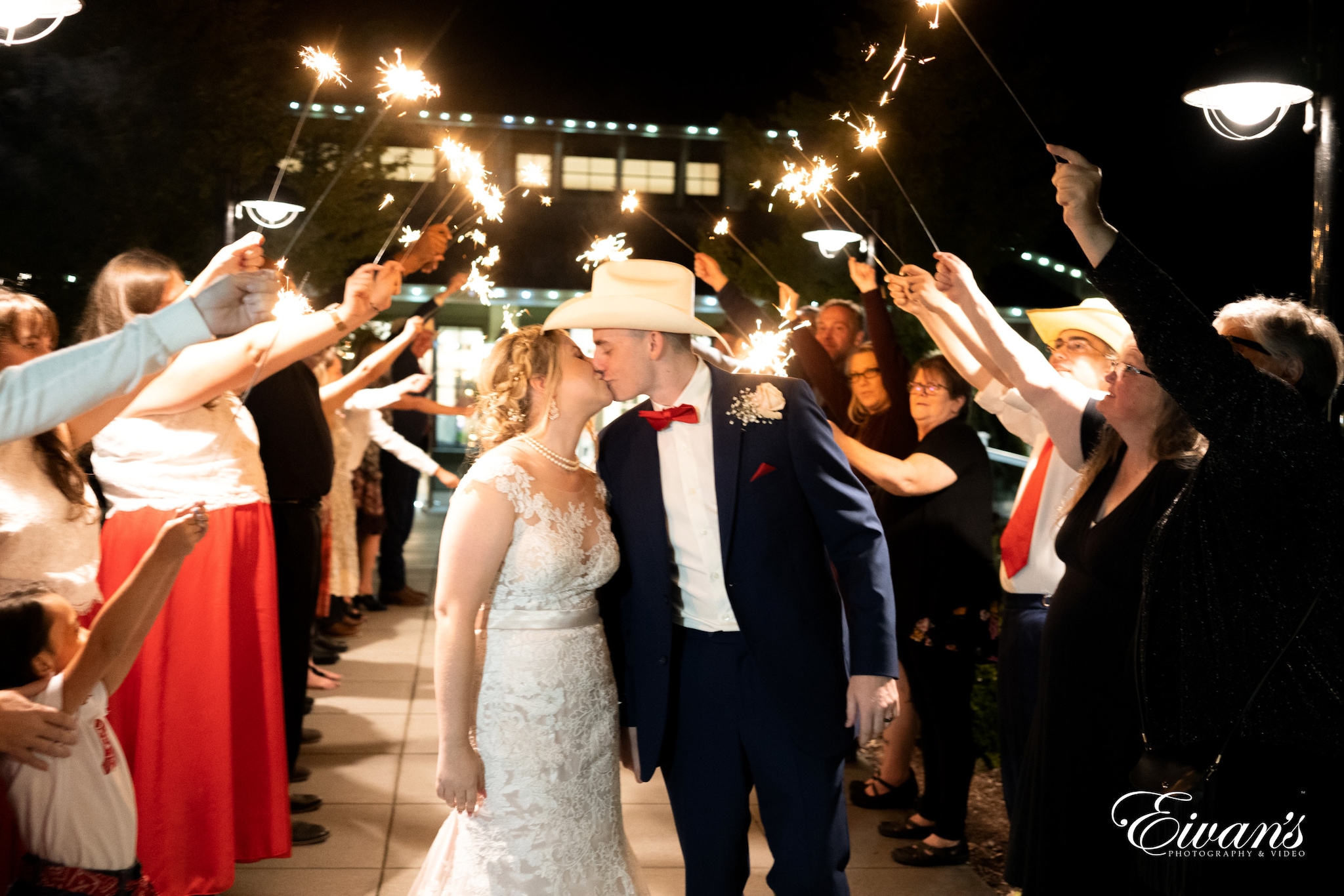
Head coverings
During a traditional Jewish wedding, guests should cover themselves. The male guests cover their heads with a skullcap known as yarmulke or kippah as a sign of respect.
Married women use lace head covering secured with a bobby pin or wear kippot. The couple provides the head coverings at the ceremony so guests do not have to bring their own. The couple wears a prayer shawl when the officiant is praying over them.
Jewish Henna
The henna event takes place the week before the wedding. The bride’s family members walk in first with gifts for the couple. The gifts comprise fruit baskets or baskets full of henna paste.
The Jewish Henna ceremony is different from any other; the henna dye is used differently. A half teaspoon of henna dye is placed in the palm of the bride and groom’s hands and tied with a ribbon.
The henna symbolizes fertility, good luck and protection against the evil eyes. For the ceremony, the bride wears a red and gold velvet caftan paired with a headpiece.
This piece passes down generation to generation, worn by all the brides in her family who were before her. The groom wears a Jilaba, a red hat and a white caftan.
Separate seating
Orthodox Jewish weddings need men and women to sit apart during the wedding ceremony. A mechitza is set up to divide the men and women. There are separate dancing floors too but this is only in some Jewish receptions.
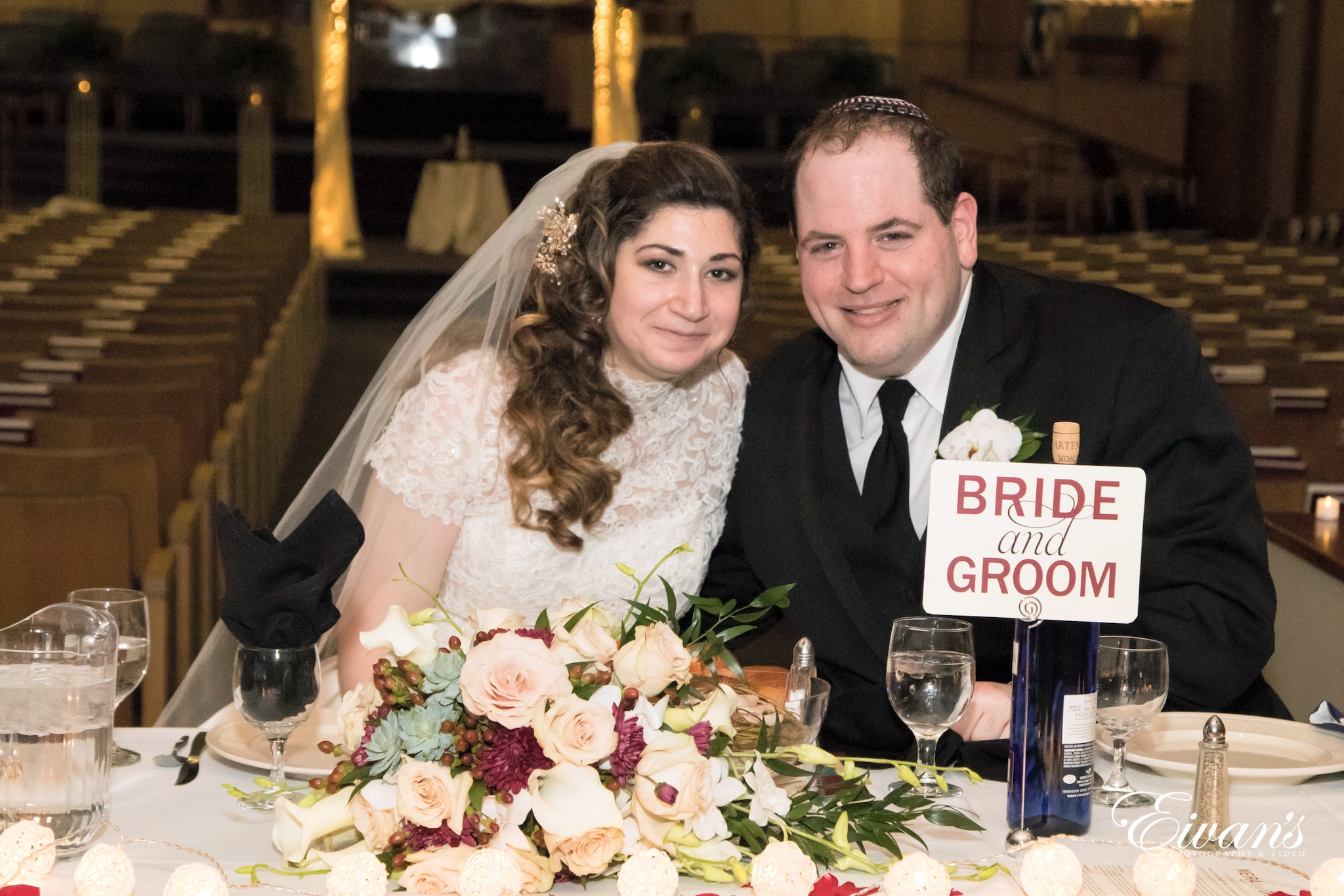
Bedeken
A bedeken ceremony takes place before the wedding. It represents modesty and references the Jewish biblical stories. Like the story of Jacob, Leah and Rachel.
The bride and groom are separated before the Bedeken happens. The groom and his male relatives and friends make a joyful processional to the bride.
The bride sits on a throne surrounded by her female relatives and friends. It is a wedding ritual to have the groom put a veil over the bride’s face.
The wedding day
Jewish traditions consider the wedding day as one of the happiest and holiest day of one’s life. On this day, Chatan (the groom) and the kallah (bride) have all their past mistakes forgiven as they join into a new soul.
Chuppah
The marriage ceremony takes place under the wedding canopy known as Chuppah. It is a symbol of home that the new couple will build together.
The Chuppah must be open on all four sides to welcome guests. The Chataan and Kallah wear no jewelry under the marriage canopy.
Its a symbol of their mutual commitment based on who they are as people not on any material possessions. Both the bride and groom walk to the Chuppah with their parents.
First goes the bride, then the groom! The Kallah circles the Chatan seven times to figuratively build the walls of their new home.

Blessings of Kiddushin (betrothal)
Wine in the Jewish culture is part of the weddings. Two cups of wine are used in the wedding ceremony. The first cup accompanies the betrothal blessings recited by the Officiant. They drink from the cup after the recital.
Giving out the rings
A marriage is official in the Jewish culture when the Chatan gives a ring to the Kallah. The wedding ring features plain gold without blemishes or stones. The Chatan declares to Kallah, “Behold you are betrothed unto me with this ring, according to the Law of Moses and Israel.”
He then places the ring in the forefinger of the bride’s right hand. After the wedding ring, the couple is now married. The Kallah might want to give the Chatan, it happens outside of Chuppah. This is to prevent confusion about what makes up the actual marriage as described by the Torah.
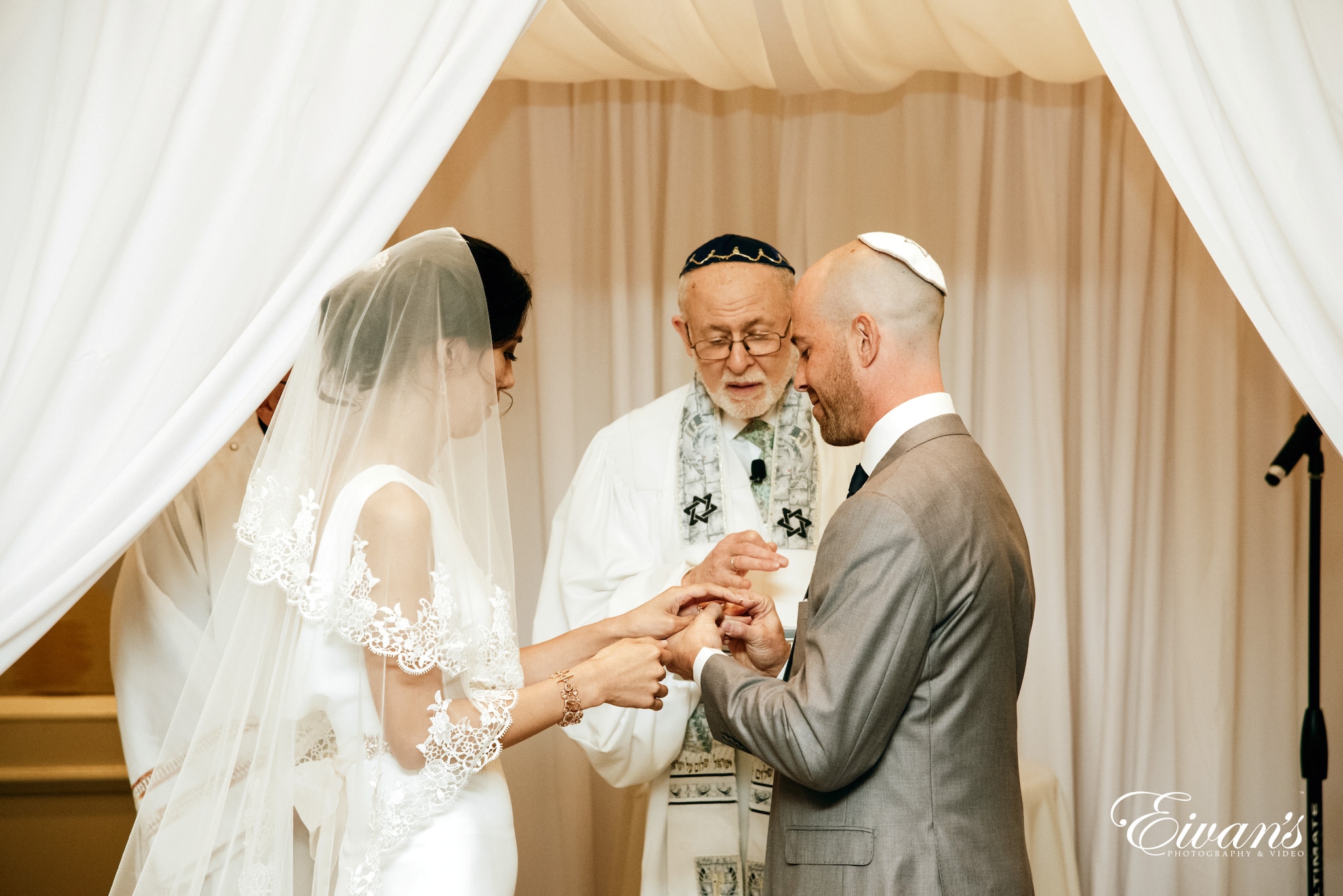
Ketubah
The marriage contract outlines Chatan’s responsibilities. They means he provides food, clothing, shelter and attending to her emotional needs. Ketubah is signed by two witnesses, a married couple.
It has the same power as the legal binding agreement! The marriage contract belongs to kallah, she keeps it throughout the marriage. It is often framed amidst beautiful artwork and displayed in their home.
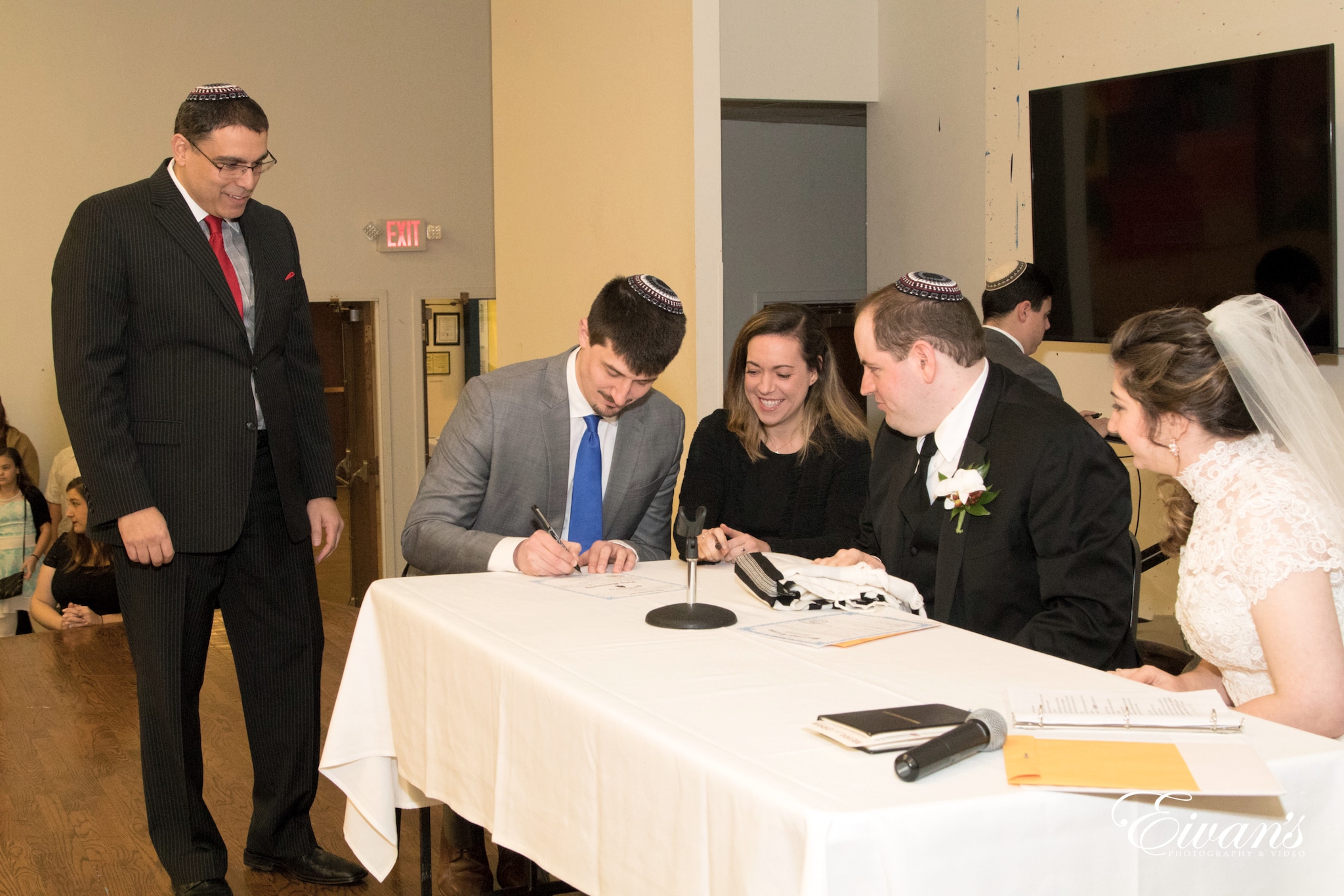
The seven blessings
Known as Sheva Brachot, the Rabbi recites them as they drink the second cup of wine. These blessings are to unite the bride and groom to faith in God. After the seven blessings, the couple drink some more wine.
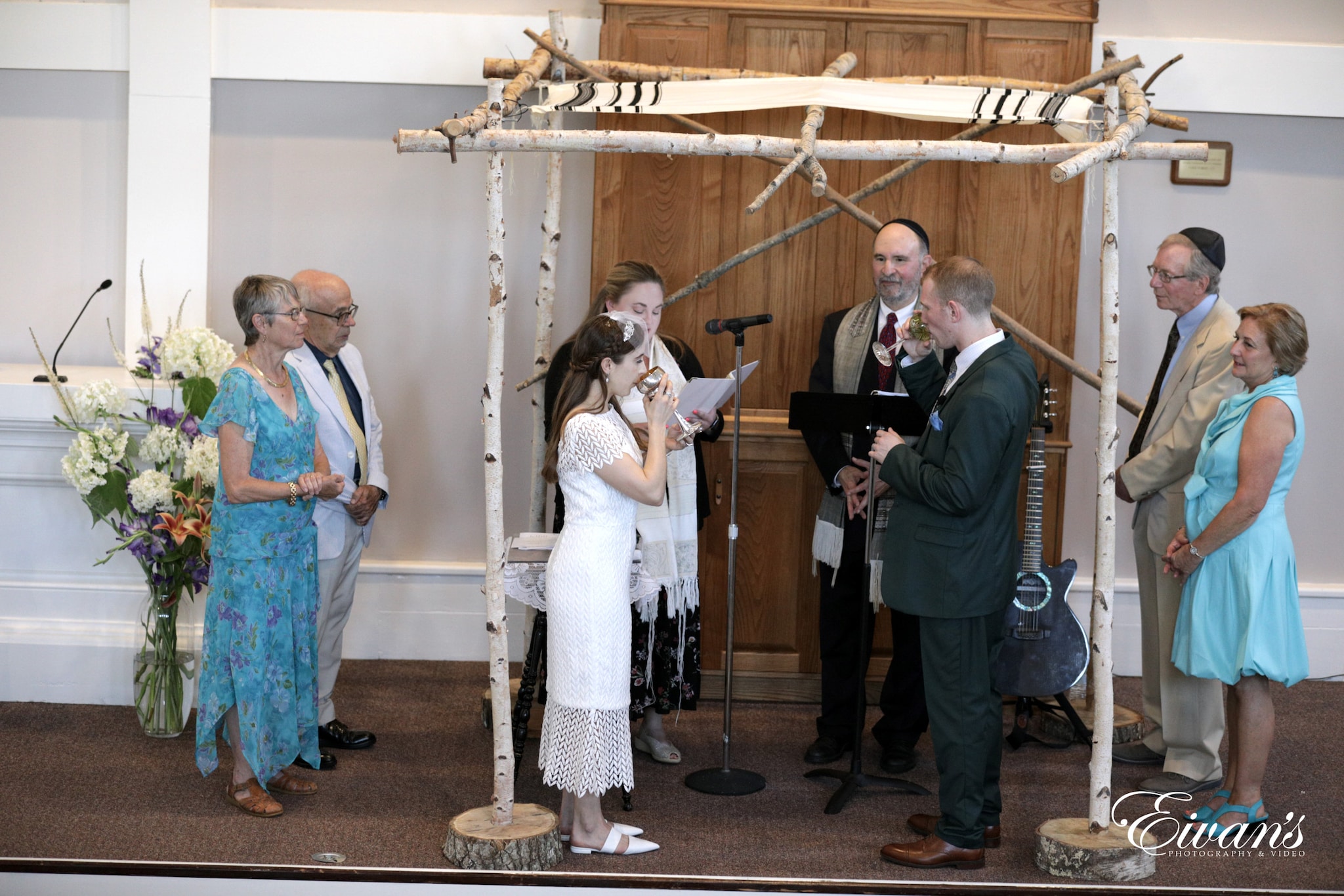
Breaking of the glass
The groom breaks glass placed on the floor with his foot. This represents the spiritual and national destiny of the Jewish people. It marks the conclusion of the wedding ceremony.
With enthusiastic shouts of Mazel Tov from the guests, the couple leaves the Chuppah.

Yichud
The married couple is escorted to the yichud room to be alone. The couple enjoys a meal together for the first time after the fast. The seclusion marks their new status as a husband and wife.
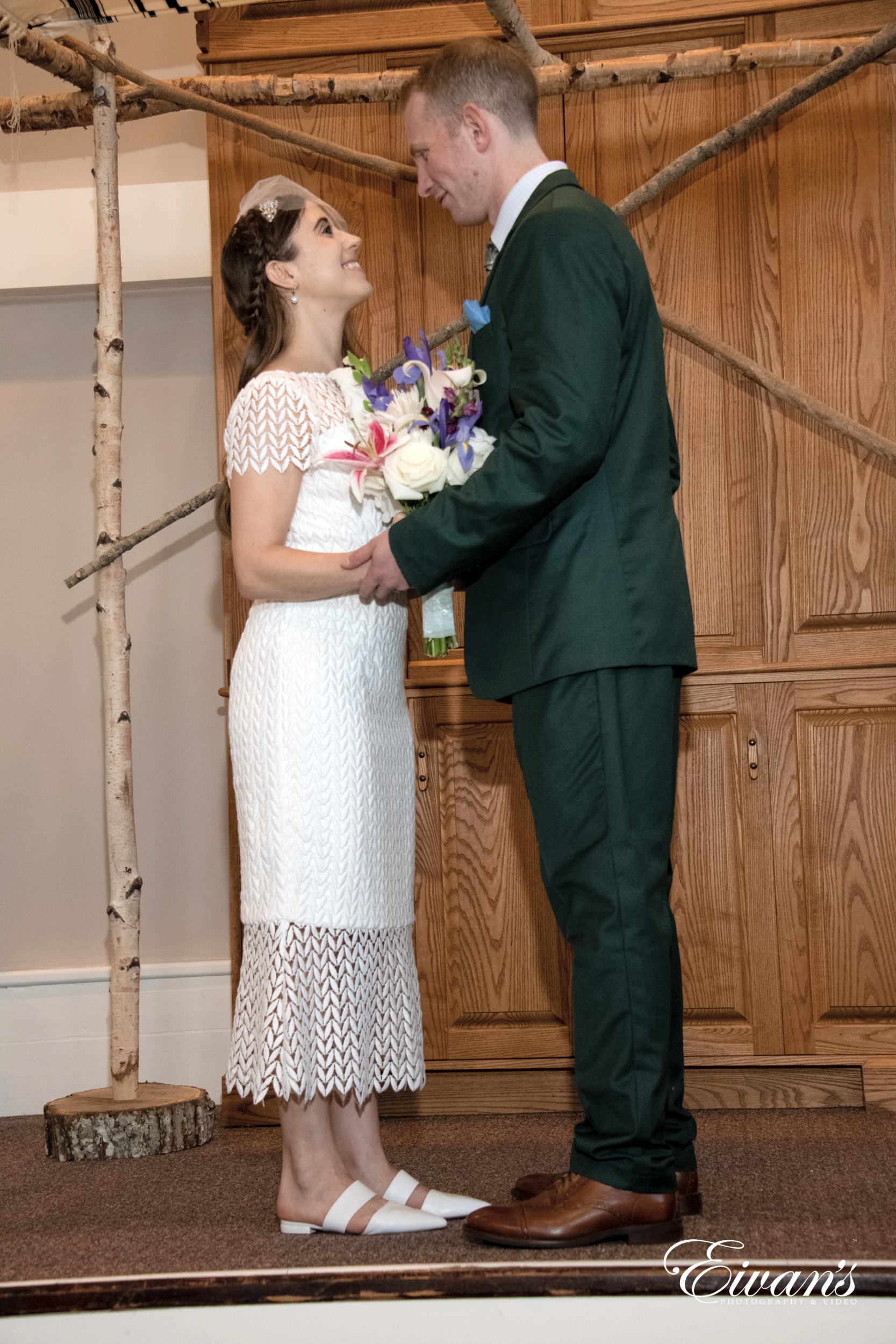
The wedding reception (Seudah)
Food and music are in plenty to celebrate the new couple. After meals, there is recital of the grace (Birkat Hamazon) and the Sheva Brachot repeated.
This marks the end of the ceremony of a traditional Jewish wedding. The married couple can now retire for the night.

